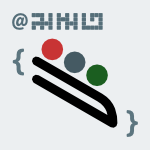399 papers:
 CASE-2015-Sakakura #framework
CASE-2015-Sakakura #framework- A speculation on a framework that provides highly organized services for manufacturing (TS), pp. 1025–1028.
 DATE-2015-FuggerNNS #modelling #physics #towards
DATE-2015-FuggerNNS #modelling #physics #towards- Towards binary circuit models that faithfully capture physical solvability (MF, RN, TN, US), pp. 1455–1460.
 SANER-2015-MondalRS #mining #named #refactoring
SANER-2015-MondalRS #mining #named #refactoring- SPCP-Miner: A tool for mining code clones that are important for refactoring or tracking (MM, CKR, KAS), pp. 484–488.
 STOC-2015-AaronsonA #named #problem #quantum
STOC-2015-AaronsonA #named #problem #quantum- Forrelation: A Problem that Optimally Separates Quantum from Classical Computing (SA, AA), pp. 307–316.
 DLT-2015-OttoK #automaton #order
DLT-2015-OttoK #automaton #order- Deterministic Ordered Restarting Automata that Compute Functions (FO, KK), pp. 401–412.
 ICFP-2015-KarachaliasSVJ #data type #lazy evaluation #pattern matching
ICFP-2015-KarachaliasSVJ #data type #lazy evaluation #pattern matching- GADTs meet their match: pattern-matching warnings that account for GADTs, guards, and laziness (GK, TS, DV, SLPJ), pp. 424–436.
 CHI-2015-AdibMKKM #monitoring #smarttech
CHI-2015-AdibMKKM #monitoring #smarttech- Smart Homes that Monitor Breathing and Heart Rate (FA, HM, ZK, DK, RCM), pp. 837–846.
 CHI-2015-Clarke #design
CHI-2015-Clarke #design- The Work of Mad Men that Makes the Methods of Math Men Work: Practically Occasioned Segment Design (MFC), pp. 3275–3284.
 CHI-2015-EslamiRVAVKHS #algorithm #quote #reasoning
CHI-2015-EslamiRVAVKHS #algorithm #quote #reasoning- “I always assumed that I wasn’t really that close to [her]”: Reasoning about Invisible Algorithms in News Feeds (ME, AR, KV, AA, AV, KK, KH, CS), pp. 153–162.
 CHI-2015-GennipHM #design #interactive #memory management
CHI-2015-GennipHM #design #interactive #memory management- Things That Make Us Reminisce: Everyday Memory Cues as Opportunities for Interaction Design (DvG, EvdH, PM), pp. 3443–3452.
 CHI-2015-Gilbert #abstraction
CHI-2015-Gilbert #abstraction- Open Book: A Socially-inspired Cloaking Technique that Uses Lexical Abstraction to Transform Messages (EG), pp. 477–486.
 CHI-2015-JohnsonNW #all about #case study #experience #game studies #video
CHI-2015-JohnsonNW #all about #case study #experience #game studies #video- All about that Base: Differing Player Experiences in Video Game Genres and the Unique Case of MOBA Games (DJ, LEN, PW), pp. 2265–2274.
 CHI-2015-LaseckiKRSBB #crowdsourcing #named #sketching #user interface
CHI-2015-LaseckiKRSBB #crowdsourcing #named #sketching #user interface- Apparition: Crowdsourced User Interfaces that Come to Life as You Sketch Them (WSL, JK, NR, OS, JPB, MSB), pp. 1925–1934.
 CHI-2015-SchmidtKMUKCB #artificial reality #named #simulation
CHI-2015-SchmidtKMUKCB #artificial reality #named #simulation- Level-Ups: Motorized Stilts that Simulate Stair Steps in Virtual Reality (DS, RK, VM, UU, SK, LPC, PB), pp. 2157–2160.
 CHI-2015-StawarzCB #design #self #smarttech
CHI-2015-StawarzCB #design #self #smarttech- Beyond Self-Tracking and Reminders: Designing Smartphone Apps That Support Habit Formation (KS, ALC, AB), pp. 2653–2662.
 DUXU-DD-2015-GuoSYL #people
DUXU-DD-2015-GuoSYL #people- Personal Museum — A New Museum that Focus on Emotional Relationship Between People and Belongings (LG, YS, SY, HBL), pp. 502–512.
 DUXU-DD-2015-Lera #approach #design #interactive #matter
DUXU-DD-2015-Lera #approach #design #interactive #matter- Emotion-Centered-Design (ECD) New Approach for Designing Interactions that Matter (EdL), pp. 406–416.
 HCI-IT-2015-LeeJ #personalisation
HCI-IT-2015-LeeJ #personalisation- Personalization Through Personification — Factors that Influence Personification of Handheld Devices (JML, DYJ), pp. 440–447.
 HIMI-IKC-2015-ZhangT #design #game studies
HIMI-IKC-2015-ZhangT #design #game studies- Considering a New Nanbu Fuurin Design that Play a Healing Sound — Including Innovations in Appearance and Texture, and Continually Improving- (YZ, TT), pp. 675–684.
 ICEIS-v1-2015-SilvaBZ
ICEIS-v1-2015-SilvaBZ- Indirect Normative Conflict — Conflict that Depends on the Application Domain (VTdS, CB, JdOZ), pp. 452–461.
 RecSys-2015-AuteriT #linear #personalisation
RecSys-2015-AuteriT #linear #personalisation- Personalized Catch-up & DVR: VOD or Linear, That is the Question (PA, RT), p. 227.
 SAC-2015-KaplanisKSMT
SAC-2015-KaplanisKSMT- HB+tree: use hadoop and HBase even your data isn’t that big (AK, MK, SS, CM, GT), pp. 973–980.
 ESEC-FSE-2015-MutluTL #detection #javascript #matter
ESEC-FSE-2015-MutluTL #detection #javascript #matter- Detecting JavaScript races that matter (EM, ST, BL), pp. 381–392.
 ICSE-v1-2015-NistorCRL #detection #named #performance #problem
ICSE-v1-2015-NistorCRL #detection #named #performance #problem- CARAMEL: Detecting and Fixing Performance Problems That Have Non-Intrusive Fixes (AN, PCC, CR, SL), pp. 902–912.
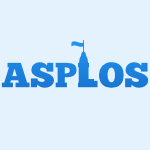 ASPLOS-2015-MalkaABT #named #performance
ASPLOS-2015-MalkaABT #named #performance- rIOMMU: Efficient IOMMU for I/O Devices that Employ Ring Buffers (MM, NA, MBY, DT), pp. 355–368.
 SOSP-2015-CurtsingerB #named #profiling
SOSP-2015-CurtsingerB #named #profiling- Coz: finding code that counts with causal profiling (CC, EDB), pp. 184–197.
 DocEng-2014-HailpernVD14a #ll #named
DocEng-2014-HailpernVD14a #ll #named- Truncation: all the news that fits we’ll print (JMH, NDV, MD), pp. 165–174.
 HT-2014-KoidlCW #independence #personalisation
HT-2014-KoidlCW #independence #personalisation- Cross-site personalization: assisting users in addressing information needs that span independently hosted websites (KK, OC, VW), pp. 66–76.
 VLDB-2014-FuOPZ #component #declarative #javascript #named #using
VLDB-2014-FuOPZ #component #declarative #javascript #named #using- FORWARD: Data-Centric UIs using Declarative Templates that Efficiently Wrap Third-Party JavaScript Components (YF, KWO, YP, EZ), pp. 1649–1652.
 VLDB-2014-GeertsMPS #exclamation #open source
VLDB-2014-GeertsMPS #exclamation #open source- That’s All Folks! LLUNATIC Goes Open Source (FG, GM, PP, DS), pp. 1565–1568.
 MSR-2014-GuoLM #exclamation #question
MSR-2014-GuoLM #exclamation #question- Oops! where did that code snippet come from? (LG, JLL, GM), pp. 52–61.
 MSR-2014-KechagiaS #exception
MSR-2014-KechagiaS #exception- Undocumented and unchecked: exceptions that spell trouble (MK, DS), pp. 312–315.
 STOC-2014-GoldreichW #algorithm #on the
STOC-2014-GoldreichW #algorithm #on the- On derandomizing algorithms that err extremely rarely (OG, AW), pp. 109–118.
 CHI-2014-BardzellBT #quote #self #tool support
CHI-2014-BardzellBT #quote #self #tool support- “Now that’s definitely a proper hack”: self-made tools in hackerspaces (JB, SB, AT), pp. 473–476.
 CHI-2014-StawarzCB #design #effectiveness #exclamation
CHI-2014-StawarzCB #design #effectiveness #exclamation- Don’t forget your pill!: designing effective medication reminder apps that support users’ daily routines (KS, ALC, AB), pp. 2269–2278.
 CSCW-2014-MitraG #people #predict
CSCW-2014-MitraG #people #predict- The language that gets people to give: phrases that predict success on kickstarter (TM, EG), pp. 49–61.
 CSCW-2014-OleksikMJ #collaboration #design
CSCW-2014-OleksikMJ #collaboration #design- Study of electronic lab notebook design and practices that emerged in a collaborative scientific environment (GO, NMF, RJ), pp. 120–133.
 DHM-2014-IshidaSK
DHM-2014-IshidaSK- Safe Walker-Shoes That Alert the Wearer to a Danger (MI, HS, TK), pp. 612–619.
 DUXU-DP-2014-PosadaHB #motivation #on the #user interface
DUXU-DP-2014-PosadaHB #motivation #on the #user interface- On Feelings of Comfort, Motivation and Joy that GUI and TUI Evoke (JEGP, ECSH, MCCB), pp. 273–284.
 DUXU-TMT-2014-Kurosu #user interface
DUXU-TMT-2014-Kurosu #user interface- User Interfaces That Appeared in SciFi Movies and Their Reality (MK), pp. 580–588.
 HCI-AS-2014-HidakaO
HCI-AS-2014-HidakaO- Proposal for a New Entertainment System That Connects Real Life and Net Excitement (KH, KO), pp. 604–613.
 HCI-AS-2014-SatoYSR #collaboration
HCI-AS-2014-SatoYSR #collaboration- Collaborative Digital Sports Systems That Encourage Exercise (AS, AY, IS, JR), pp. 332–340.
 LCT-TRE-2014-TzanavariMCP #experience #performance #user interface #using
LCT-TRE-2014-TzanavariMCP #experience #performance #user interface #using- User Experience Observations on Factors That Affect Performance in a Road-Crossing Training Application for Children Using the CAVE (AT, SM, CGC, CP), pp. 91–101.
 ECIR-2014-Koolen #exclamation #ll #quote
ECIR-2014-Koolen #exclamation #ll #quote- “User Reviews in the Search Index? That’ll Never Work!” (MK), pp. 323–334.
 KDIR-2014-OkumuraYSO #identification #twitter
KDIR-2014-OkumuraYSO #identification #twitter- Identifying Tweets that Contain a “Heartwarming Story” (MO, YY, MS, HO), pp. 323–326.
 PPDP-2014-CheneyAA #database #query
PPDP-2014-CheneyAA #database #query- Database Queries that Explain their Work (JC, AA, UAA), pp. 271–282.
 POPL-2014-FarzanKP #proving
POPL-2014-FarzanKP #proving- Proofs that count (AF, ZK, AP), pp. 151–164.
 SAC-2014-ChallcoI #authoring #design #learning #personalisation #towards
SAC-2014-ChallcoI #authoring #design #learning #personalisation #towards- Towards a learning design authoring tool that generates personalized units of learning for CSCL (GCC, SI), pp. 778–780.
 SAC-2014-KumeNNS #dynamic analysis #framework
SAC-2014-KumeNNS #dynamic analysis #framework- A dynamic analysis technique to extract symptoms that suggest side effects in framework applications (IK, NN, MN, ES), pp. 1176–1178.
 FSE-2014-XiaoCK #analysis #architecture #named #quality #tool support
FSE-2014-XiaoCK #analysis #architecture #named #quality #tool support- Titan: a toolset that connects software architecture with quality analysis (LX, YC, RK), pp. 763–766.
 PPoPP-2014-AgrawalFSSU #data type #parallel #scheduling #source code
PPoPP-2014-AgrawalFSSU #data type #parallel #scheduling #source code- Provably good scheduling for parallel programs that use data structures through implicit batching (KA, JTF, BS, JS, RU), pp. 389–390.
 PPoPP-2014-RodriguesJDH #algorithm #clustering #interface #named #programming
PPoPP-2014-RodriguesJDH #algorithm #clustering #interface #named #programming- Triolet: a programming system that unifies algorithmic skeleton interfaces for high-performance cluster computing (CIR, TBJ, AD, WmWH), pp. 247–258.
 IJCAR-2014-EhlersL #approximate #finite #incremental #logic #satisfiability
IJCAR-2014-EhlersL #approximate #finite #incremental #logic #satisfiability- A Tool That Incrementally Approximates Finite Satisfiability in Full Interval Temporal Logic (RE, ML), pp. 360–366.
 ICDAR-2013-Deryagin #evaluation #performance #segmentation
ICDAR-2013-Deryagin #evaluation #performance #segmentation- Unified Performance Evaluation for OCR Zoning: Calculating Page Segmentation’s Score, That Includes Text Zones, Tables and Non-text Objects (DD), pp. 953–957.
 ICDAR-2013-KimuraHUIOK
ICDAR-2013-KimuraHUIOK- The Reading-Life Log — Technologies to Recognize Texts That We Read (TK, RH, SU, MI, SO, KK), pp. 91–95.
 VLDB-2013-ShuteVSHWROLMECRSA #database #distributed #named #scalability #sql
VLDB-2013-ShuteVSHWROLMECRSA #database #distributed #named #scalability #sql- F1: A Distributed SQL Database That Scales (JS, RV, BS, BH, CW, ER, MO, KL, DM, SE, JC, IR, TS, HA), pp. 1068–1079.
 ITiCSE-2013-IsomottonenTC #self
ITiCSE-2013-IsomottonenTC #self- Issues with a course that emphasizes self-direction (VI, VT, MC), pp. 111–116.
 PASTE-2013-YasugiMU #evaluation #performance
PASTE-2013-YasugiMU #evaluation #performance- A proper performance evaluation system that summarizes code placement effects (MY, YM, TU), pp. 41–48.
 ICALP-v1-2013-LauriaPRT #complexity #graph #proving
ICALP-v1-2013-LauriaPRT #complexity #graph #proving- The Complexity of Proving That a Graph Is Ramsey (ML, PP, VR, NT), pp. 684–695.
 LATA-2013-BabaaliK #automaton #on the #product line
LATA-2013-BabaaliK #automaton #on the #product line- On the Construction of a Family of Automata That Are Generically Non-minimal (PB, CK), pp. 80–91.
 CHI-2013-KulkarniC #case study #social
CHI-2013-KulkarniC #case study #social- All the news that’s fit to read: a study of social annotations for news reading (CK, EC), pp. 2407–2416.
 CHI-2013-WycheC #design #how #quote
CHI-2013-WycheC #design #how #quote- “I want to imagine how that place looks”: designing technologies to support connectivity between africans living abroad and home (SW, MC), pp. 2755–2764.
 CSCW-2013-SleeperBDMWC #facebook #self
CSCW-2013-SleeperBDMWC #facebook #self- The post that wasn’t: exploring self-censorship on facebook (MS, RB, SD, ALM, JW, LFC), pp. 793–802.
 DHM-HB-2013-SenanayakeG
DHM-HB-2013-SenanayakeG- Setting That Mouse for Tracking Tasks (RS, RSG), pp. 276–281.
 DHM-SET-2013-MurataKMH
DHM-SET-2013-MurataKMH- Proposal of Automotive 8-directional Warning System That Makes Use of Tactile Apparent Movement (AM, SK, MM, TH), pp. 98–107.
 DUXU-CXC-2013-MarcusPL #design #learning #mobile #persuasion #user interface
DUXU-CXC-2013-MarcusPL #design #learning #mobile #persuasion #user interface- The Learning Machine: Mobile UX Design That Combines Information Design with Persuasion Design (AM, YP, NL), pp. 247–256.
 DUXU-NTE-2013-MarcusA #design #mobile #persuasion #user interface
DUXU-NTE-2013-MarcusA #design #mobile #persuasion #user interface- The Driving Machine: Mobile UX Design That Combines Information Design with Persuasion Design (AM, SA), pp. 140–149.
 DUXU-WM-2013-MarcusSC #design #mobile #persuasion #user interface
DUXU-WM-2013-MarcusSC #design #mobile #persuasion #user interface- The Travel Machine: Mobile UX Design That Combines Information Design with Persuasion Design (AM, TKS, LC), pp. 696–705.
 HCI-AS-2013-LucenaMPF #design
HCI-AS-2013-LucenaMPF #design- Telemedicine and Design: Relationships that Create Opportunities (CAPdL, CRM, FP, LF), pp. 127–133.
 HCI-III-2013-KunoST
HCI-III-2013-KunoST- Long-Term Study of a Software Keyboard That Places Keys at Positions of Fingers and Their Surroundings (YK, BS, JT), pp. 72–81.
 HCI-III-2013-SatoWYR #coordination #named
HCI-III-2013-SatoWYR #coordination #named- suGATALOG: Fashion Coordination System That Supports Users to Choose Everyday Fashion with Clothed Pictures (AS, KW, MY, JR), pp. 112–121.
 HCI-IMT-2013-HenschenL #design #interface #network
HCI-IMT-2013-HenschenL #design #interface #network- A Web-Based Interface for a System That Designs Sensor Networks (LJH, JCL), pp. 688–697.
 HIMI-HSM-2013-KarashimaN #behaviour #safety
HIMI-HSM-2013-KarashimaN #behaviour #safety- Influence of the Safety Margin on Behavior that Violates Rules (MK, HN), pp. 497–506.
 HIMI-HSM-2013-MizutaniKSASUKSI #development #eye tracking #visual notation
HIMI-HSM-2013-MizutaniKSASUKSI #development #eye tracking #visual notation- Development of Screening Visual Field Test Application that Use Eye Movement (MM, KK, SS, TA, TS, MU, SK, MS, TI), pp. 291–300.
 OCSC-2013-OtakeUS #game studies #social
OCSC-2013-OtakeUS #game studies #social- A Consideration of the Functions That Support to Find New Friends in Social Games (KO, TU, AS), pp. 405–411.
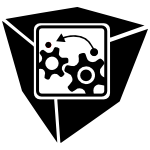 VISSOFT-2013-BradleyH #composition #development #named #navigation
VISSOFT-2013-BradleyH #composition #development #named #navigation- Visuocode: A software development environment that supports spatial navigation and composition (DRB, IJH), pp. 1–4.
 ICEIS-v1-2013-SilveiraMAC #development #library #matrix #memory management #process
ICEIS-v1-2013-SilveiraMAC #development #library #matrix #memory management #process- A Library to Support the Development of Applications that Process Huge Matrices in External Memory (JAS, SVGM, MVAA, VSC), pp. 153–160.
 ICEIS-v3-2013-SzirbikB #architecture #network
ICEIS-v3-2013-SzirbikB #architecture #network- Discovering the EIS Architecture that Supports Hub-and-Spoke Freight Transportation Networks Operating in a Cross Dock Mode (NBS, PB), pp. 388–395.
 ICML-c3-2013-CovielloMCL #exclamation #performance
ICML-c3-2013-CovielloMCL #exclamation #performance- That was fast! Speeding up NN search of high dimensional distributions (EC, AM, ABC, GRGL), pp. 468–476.
 KDD-2013-Etzioni
KDD-2013-Etzioni- To buy or not to buy: that is the question (OE), p. 1133.
 OOPSLA-2013-CarbinMR #hardware #reliability #source code #verification
OOPSLA-2013-CarbinMR #hardware #reliability #source code #verification- Verifying quantitative reliability for programs that execute on unreliable hardware (MC, SM, MCR), pp. 33–52.
 SAC-2013-YuFH
SAC-2013-YuFH- An intelligent building that listens to your needs (DYY, EF, HH), pp. 58–63.
 CGO-2013-RenALMPS #data type #parallel
CGO-2013-RenALMPS #data type #parallel- SIMD parallelization of applications that traverse irregular data structures (BR, GA, JRL, TM, TP, WS), p. 10.
 HPDC-2013-Shaw #named #simulation
HPDC-2013-Shaw #named #simulation- Anton: a special-purpose machine that achieves a hundred-fold speedup in biomolecular simulations (DES), pp. 129–130.
 HPDC-2013-ZhouTKB #automation #debugging #detection #named #scalability
HPDC-2013-ZhouTKB #automation #debugging #detection #named #scalability- WuKong: automatically detecting and localizing bugs that manifest at large system scales (BZ, JT, MK, SB), pp. 131–142.
 HT-2012-ComarelaCAB #comprehension #twitter
HT-2012-ComarelaCAB #comprehension #twitter- Understanding factors that affect response rates in twitter (GC, MC, VA, FB), pp. 123–132.
 ICSM-2012-BasitAHJ
ICSM-2012-BasitAHJ- Things structural clones tell that simple clones don’t (HAB, UA, SH, SJ), pp. 275–284.
 PEPM-2012-HirzelG #metaprogramming #using
PEPM-2012-HirzelG #metaprogramming #using- Streams that compose using macros that oblige (MH, BG), pp. 141–150.
 PEPM-2012-Katayama #functional #induction #programming #source code
PEPM-2012-Katayama #functional #induction #programming #source code- An analytical inductive functional programming system that avoids unintended programs (SK), pp. 43–52.
 ICALP-v2-2012-BojanczykP #infinity #regular expression #set
ICALP-v2-2012-BojanczykP #infinity #regular expression #set- Regular Languages of Infinite Trees That Are Boolean Combinations of Open Sets (MB, TP), pp. 104–115.
 ICFP-2012-PereraACL #functional #source code
ICFP-2012-PereraACL #functional #source code- Functional programs that explain their work (RP, UAA, JC, PBL), pp. 365–376.
 CHI-2012-BadshahGMPT #feedback #named
CHI-2012-BadshahGMPT #feedback #named- GyroTab: a handheld device that provides reactive torque feedback (AB, SG, DM, SP, DST), pp. 3153–3156.
 CHI-2012-BirnholtzBF #behaviour
CHI-2012-BirnholtzBF #behaviour- Do you see that I see?: effects of perceived visibility on awareness checking behavior (JPB, NB, SRF), pp. 1765–1774.
 CHI-2012-CoyleMKFB #exclamation #experience
CHI-2012-CoyleMKFB #exclamation #experience- I did that!: measuring users’ experience of agency in their own actions (DC, JWM, POK, PF, AB), pp. 2025–2034.
 CHI-2012-LewisL #community
CHI-2012-LewisL #community- Examining technology that supports community policing (SL, DAL), pp. 1371–1380.
 CHI-2012-SugiuraLOWMSII #named
CHI-2012-SugiuraLOWMSII #named- PINOKY: a ring that animates your plush toys (YS, CL, MO, AIW, YM, DS, MI, TI), pp. 725–734.
 CHI-2012-SzafirM #adaptation #design #exclamation #monitoring
CHI-2012-SzafirM #adaptation #design #exclamation #monitoring- Pay attention!: designing adaptive agents that monitor and improve user engagement (DS, BM), pp. 11–20.
 CHI-2012-TeoJB #layout #named
CHI-2012-TeoJB #layout #named- CogTool-Explorer: a model of goal-directed user exploration that considers information layout (LT, BEJ, MHB), pp. 2479–2488.
 CSCW-2012-Gilbert
CSCW-2012-Gilbert- Phrases that signal workplace hierarchy (EG), pp. 1037–1046.
 CSCW-2012-SchroterADK #communication
CSCW-2012-SchroterADK #communication- To talk or not to talk: factors that influence communication around changesets (AS, JA, DD, IK), pp. 1317–1326.
 CIKM-2012-AltingovdeBCOSU #query #web
CIKM-2012-AltingovdeBCOSU #query #web- Characterizing web search queries that match very few or no results (ISA, RB, BBC, RO, ES, ÖU), pp. 2000–2004.
 CIKM-2012-Diaz-AvilesDGSN #online #recommendation #topic #twitter #what
CIKM-2012-Diaz-AvilesDGSN #online #recommendation #topic #twitter #what- What is happening right now ... that interests me?: online topic discovery and recommendation in twitter (EDA, LD, ZG, LST, WN), pp. 1592–1596.
 CIKM-2012-ShenCL
CIKM-2012-ShenCL- Loyalty-based selection: retrieving objects that persistently satisfy criteria (ZS, MAC, XL), pp. 2189–2193.
 ICML-2012-PrasseSLS #email #identification #learning #regular expression
ICML-2012-PrasseSLS #email #identification #learning #regular expression- Learning to Identify Regular Expressions that Describe Email Campaigns (PP, CS, NL, TS), p. 146.
 ICML-2012-Wagstaff #machine learning #matter
ICML-2012-Wagstaff #machine learning #matter- Machine Learning that Matters (KW), p. 240.
 KDD-2012-BorgholACEM #video
KDD-2012-BorgholACEM #video- The untold story of the clones: content-agnostic factors that impact YouTube video popularity (YB, SA, NC, DLE, AM), pp. 1186–1194.
 KR-2012-BaralD #automation #how #learning #programming #set
KR-2012-BaralD #automation #how #learning #programming #set- Solving Puzzles Described in English by Automated Translation to Answer Set Programming and Learning How to Do that Translation (CB, JD).
 RecSys-2012-ChhabraR #named #recommendation
RecSys-2012-ChhabraR #named #recommendation- CubeThat: news article recommender (SC, PR), pp. 295–296.
 ISSTA-2012-JensenJM
ISSTA-2012-JensenJM- Remedying the eval that men do (SHJ, PAJ, AM), pp. 34–44.
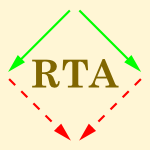 RTA-2012-CousineauH #proving #semantics
RTA-2012-CousineauH #proving #semantics- A Semantic Proof that Reducibility Candidates entail Cut Elimination (DC, OH), pp. 133–148.
 CBSE-2011-LauSST #component #data-driven
CBSE-2011-LauSST #component #data-driven- A component model that is both control-driven and data-driven (KKL, LS, PS, CMT), pp. 41–50.
 ITiCSE-2011-BellCCDH #programming #student
ITiCSE-2011-BellCCDH #programming #student- Introducing students to computer science with programmes that don’t emphasise programming (TB, PC, QIC, VD, BH), p. 391.
 ICPC-J-2009-HammadCM11 #automation #evolution #identification #traceability
ICPC-J-2009-HammadCM11 #automation #evolution #identification #traceability- Automatically identifying changes that impact code-to-design traceability during evolution (MH, MLC, JIM), pp. 35–64.
 LATA-2011-ReidenbachS #memory management #scheduling #word
LATA-2011-ReidenbachS #memory management #scheduling #word- Finding Shuffle Words That Represent Optimal Scheduling of Shared Memory Access (DR, MLS), pp. 465–476.
 CHI-2011-LeshedS #case study #experience #quote #tool support
CHI-2011-LeshedS #case study #experience #quote #tool support- “I lie to myself that I have freedom in my own schedule”: productivity tools and experiences of busyness (GL, PS), pp. 905–914.
 CHI-2011-McGee-LennonWMBH
CHI-2011-McGee-LennonWMBH- Name that tune: musicons as reminders in the home (MRML, MKW, RM, SAB, CVH), pp. 2803–2806.
 CHI-2011-ShklovskiK #internet #online
CHI-2011-ShklovskiK #internet #online- Online contribution practices in countries that engage in internet blocking and censorship (IS, NK), pp. 1109–1118.
 CSCW-2011-NewmanLMRM #challenge #facebook #health #network #online #problem #social #using
CSCW-2011-NewmanLMRM #challenge #facebook #health #network #online #problem #social #using- It’s not that I don’t have problems, I’m just not putting them on facebook: challenges and opportunities in using online social networks for health (MWN, DL, SAM, PR, MEM), pp. 341–350.
 DUXU-v2-2011-Marcus #design #health #mobile #persuasion #user interface
DUXU-v2-2011-Marcus #design #health #mobile #persuasion #user interface- The Health Machine: Mobile UX Design That Combines Information Design with Persuasion Design (AM), pp. 598–607.
 DUXU-v2-2011-WatanabeYHA #user interface #web
DUXU-v2-2011-WatanabeYHA #user interface #web- Study of User Interface for Browsing Web Contents That Considers the Cognitive Features of Older Users (MW, SY, RH, YA), pp. 60–67.
 IDGD-2011-WelkerGS #design #evaluation #web
IDGD-2011-WelkerGS #design #evaluation #web- Designing Web Marketing that Works for Users: Finding Best Practices through Evaluation and Conversation (KW, FYG, SS), pp. 407–416.
 VISSOFT-2011-WalnyHDSC #development #diagrams #lifecycle #sketching
VISSOFT-2011-WalnyHDSC #development #diagrams #lifecycle #sketching- Follow that sketch: Lifecycles of diagrams and sketches in software development (JW, JH, MD, JS, MSTC), pp. 1–8.
 CIKM-2011-Karger #people #user interface
CIKM-2011-Karger #people #user interface- Creating user interfaces that entice people to manage better information (DRK), pp. 1–2.
 KDIR-2011-PaquetVG
KDIR-2011-PaquetVG- To Aggregate or Not to Aggregate: That is the Question (EP, HLV, HG), pp. 354–357.
 KEOD-2011-Tinsley #ontology #realtime
KEOD-2011-Tinsley #ontology #realtime- OTTER Project — Ontology Technology that Executes Real-time: Project Status (TAT), pp. 521–527.
 SIGIR-2011-Hofmann #online
SIGIR-2011-Hofmann #online- Search engines that learn online (KH), pp. 1313–1314.
 ECMFA-2011-Tolvanen #domain-specific language #modelling
ECMFA-2011-Tolvanen #domain-specific language #modelling- Creating Domain-Specific Modelling Languages That Work: Hands-On (JPT), pp. 393–394.
 ECOOP-2011-RichardsHBV #javascript #scalability
ECOOP-2011-RichardsHBV #javascript #scalability- The Eval That Men Do — A Large-Scale Study of the Use of Eval in JavaScript Applications (GR, CH, BB, JV), pp. 52–78.
 RE-2011-WeverM #analysis #effectiveness #question #what
RE-2011-WeverM #analysis #effectiveness #question #what- What are the day-to-day factors that are preventing business analysts from effective business analysis? (AW, NAMM), pp. 293–298.
 SAC-2011-KimDB #dependence #diagrams #identification #state machine #uml
SAC-2011-KimDB #dependence #diagrams #identification #state machine #uml- Identifying properties of UML state machine diagrams that affect data and control dependence (HK, VD, DHB), pp. 1464–1469.
 SAC-2011-SantosaMK #approach #named #programming #search-based
SAC-2011-SantosaMK #approach #named #programming #search-based- HMXT-GP: an information-theoretic approach to genetic programming that maintains diversity (HS, JM, PJK), pp. 1070–1075.
 ICSE-2011-FeinRSMGGBCLSMMSD #automation #deployment #tool support #using
ICSE-2011-FeinRSMGGBCLSMMSD #automation #deployment #tool support #using- Using MATCON to generate CASE tools that guide deployment of pre-packaged applications (EF, NR, SS, PM, SG, RG, MB, SKC, JL, VSS, SM, DM, BS, PD), pp. 1016–1018.
 ICSE-2011-HolmesN #behaviour #identification
ICSE-2011-HolmesN #behaviour #identification- Identifying program, test, and environmental changes that affect behaviour (RH, DN), pp. 371–380.
 LDTA-2011-PlasmeijerLAM #coordination
LDTA-2011-PlasmeijerLAM #coordination- Getting a grip on tasks that coordinate tasks (RP, BL, PA, SM), p. 1.
 ICST-2011-FraserA #how #matter
ICST-2011-FraserA #how #matter- It is Not the Length That Matters, It is How You Control It (GF, AA), pp. 150–159.
 RTA-2011-AvanziniEM #exponential #order #term rewriting
RTA-2011-AvanziniEM #exponential #order #term rewriting- A Path Order for Rewrite Systems that Compute Exponential Time Functions (MA, NE, GM), pp. 123–138.
 DAC-2010-Breuer #bound #hardware
DAC-2010-Breuer #bound #hardware- Hardware that produces bounded rather than exact results (MAB), pp. 871–876.
 DATE-2010-ChePC #compilation #manycore #source code
DATE-2010-ChePC #compilation #manycore #source code- Compilation of stream programs for multicore processors that incorporate scratchpad memories (WC, AP, KSC), pp. 1118–1123.
 SIGMOD-2010-VartakRR #assurance #generative #named #query
SIGMOD-2010-VartakRR #assurance #generative #named #query- QRelX: generating meaningful queries that provide cardinality assurance (MV, VR, EAR), pp. 1215–1218.
 TACAS-2010-VillardLC
TACAS-2010-VillardLC- Tracking Heaps That Hop with Heap-Hop (JV, ÉL, CC), pp. 275–279.
 MSR-2010-RahmanBD #named #question #smell #what
MSR-2010-RahmanBD #named #question #smell #what- Clones: What is that smell? (FR, CB, PTD), pp. 72–81.
 CIAA-2010-TirnaucaT #automaton #identification #query
CIAA-2010-TirnaucaT #automaton #identification #query- Types of Trusted Information That Make DFA Identification with Correction Queries Feasible (CT, CIT), pp. 272–281.
 DLT-2010-OttoPM #automaton #on the
DLT-2010-OttoPM #automaton #on the- On Lexicalized Well-Behaved Restarting Automata That Are Monotone (FO, MP, FM), pp. 352–363.
 CSCW-2010-Rode
CSCW-2010-Rode- The roles that make the domestic work (JAR), pp. 381–390.
 ICEIS-AIDSS-2010-TomeAC #architecture #enterprise #experience #named
ICEIS-AIDSS-2010-TomeAC #architecture #enterprise #experience #named- TREEAD — A Tool that Enables the Re-use of Experience in Enterprise Architecture Description (PT, LA, EC), pp. 332–343.
 MoDELS-v1-2010-GoldsbyC #automation #behaviour #modelling #uml
MoDELS-v1-2010-GoldsbyC #automation #behaviour #modelling #uml- Automatically Discovering Properties That Specify the Latent Behavior of UML Models (HG, BHCC), pp. 316–330.
 SAC-2010-BaudetD #algorithm #permutation
SAC-2010-BaudetD #algorithm #permutation- An improved algorithm to enumerate all traces that sort a signed permutation by reversals (CB, ZD), pp. 1521–1525.
 SAC-2010-CostaNSFL #adaptation #framework #self
SAC-2010-CostaNSFL #adaptation #framework #self- JAAF+T: a framework to implement self-adaptive agents that apply self-test (ADdC, CN, VTdS, BFdSN, CJPdL), pp. 928–935.
 SAC-2010-LeungHB #constraints #mining #nondeterminism
SAC-2010-LeungHB #constraints #mining #nondeterminism- Mining uncertain data for frequent itemsets that satisfy aggregate constraints (CKSL, BH, DAB), pp. 1034–1038.
 FSE-2010-BegelKZ #named
FSE-2010-BegelKZ #named- WhoselsThat: finding software engineers with codebook (AB, YPK, TZ), pp. 381–382.
 PPoPP-2010-ZyulkyarovHUCV #debugging #memory management #source code #transaction
PPoPP-2010-ZyulkyarovHUCV #debugging #memory management #source code #transaction- Debugging programs that use atomic blocks and transactional memory (FZ, TH, OSÜ, AC, MV), pp. 57–66.
 LICS-2010-BojanczykL #automaton #xpath
LICS-2010-BojanczykL #automaton #xpath- An Extension of Data Automata that Captures XPath (MB, SL), pp. 243–252.
 LICS-2010-Herbelin #logic #markov #principle
LICS-2010-Herbelin #logic #markov #principle- An Intuitionistic Logic that Proves Markov’s Principle (HH), pp. 50–56.
 DAC-2009-George #how
DAC-2009-George #how- How to make computers that work like the brain (DG), pp. 420–423.
 CSEET-2009-Rosso-Llopart #education #learning #re-engineering
CSEET-2009-Rosso-Llopart #education #learning #re-engineering- An Examination of Learning Technologies That Support Software Engineering and Education (MRL), pp. 294–295.
 ICPC-2009-HammadCM #automation #identification #traceability
ICPC-2009-HammadCM #automation #identification #traceability- Automatically identifying changes that impact code-to-design traceability (MH, MLC, JIM), pp. 20–29.
 SCAM-2009-BinkleyH #clustering #dependence #identification #scalability
SCAM-2009-BinkleyH #clustering #dependence #identification #scalability- Identifying “Linchpin Vertices” That Cause Large Dependence Clusters (DB, MH), pp. 89–98.
 CHI-2009-BergmanTBCW #using
CHI-2009-BergmanTBCW #using- It’s not that important: demoting personal information of low subjective importance using GrayArea (OB, ST, RBM, EC, SW), pp. 269–278.
 CHI-2009-ConsolvoML #behaviour #design
CHI-2009-ConsolvoML #behaviour #design- Theory-driven design strategies for technologies that support behavior change in everyday life (SC, DWM, JAL), pp. 405–414.
 CHI-2009-PirolliWS #wiki
CHI-2009-PirolliWS #wiki- So you know you’re getting the best possible information: a tool that increases Wikipedia credibility (PP, EW, BS), pp. 1505–1508.
 CHI-2009-TakayamaGN #aspect-oriented #social
CHI-2009-TakayamaGN #aspect-oriented #social- I’m sorry, Dave: I’m afraid i won’t do that: social aspects of human-agent conflict (LT, VG, CN), pp. 2099–2108.
 CHI-2009-Zimmerman #design #people
CHI-2009-Zimmerman #design #people- Designing for the self: making products that help people become the person they desire to be (JZ), pp. 395–404.
 HCD-2009-BaileyWNK #metric #testing #usability
HCD-2009-BaileyWNK #metric #testing #usability- Performance-Based Usability Testing: Metrics That Have the Greatest Impact for Improving a System’s Usability (RWB, CAW, JN, SK), pp. 3–12.
 HCD-2009-Park09b #case study #design #information management
HCD-2009-Park09b #case study #design #information management- A Study of Design That Understands the Influences on the Changes of Information Processing Ability of Users (JHP), pp. 538–547.
 HCD-2009-PylaHPASH #case study #evaluation #experience #how
HCD-2009-PylaHPASH #case study #evaluation #experience #how- “How Do I Evaluate THAT?” Experiences from a Systems-Level Evaluation Effort (PSP, HRH, MAPQ, JDA, TLSJ, DH), pp. 292–301.
 HCI-NIMT-2009-Allison #adaptation #generative #human-computer #interface
HCI-NIMT-2009-Allison #adaptation #generative #human-computer #interface- The I of BCIs: Next Generation Interfaces for Brain-Computer Interface Systems That Adapt to Individual Users (BZA), pp. 558–568.
 HCI-NIMT-2009-ChenOYFT #communication
HCI-NIMT-2009-ChenOYFT #communication- Prompter “.” Based Creating Thinking Support Communication System That Allows Hand-Drawing (LJC, JO, SY, SF, YT), pp. 783–790.
 HCI-NT-2009-HaywoodB #quote
HCI-NT-2009-HaywoodB #quote- “I Love My iPhone ... But There Are Certain Things That ‘Niggle’ Me” (AH, GB), pp. 421–430.
 HCI-VAD-2009-FicarraR #human-computer #interactive
HCI-VAD-2009-FicarraR #human-computer #interactive- CAD and Communicability: A System That Improves the Human-Computer Interaction (FVCF, RAR), pp. 468–477.
 OCSC-2009-Raybourn #game studies
OCSC-2009-Raybourn #game studies- Intercultural Competence Game That Fosters Metacognitive Agility and Reflection (EMR), pp. 603–612.
 CIKM-2009-ArmstrongMWZ #ad hoc #retrieval
CIKM-2009-ArmstrongMWZ #ad hoc #retrieval- Improvements that don’t add up: ad-hoc retrieval results since 1998 (TGA, AM, WW, JZ), pp. 601–610.
 POPL-2009-GotsmanCPV #algorithm #proving
POPL-2009-GotsmanCPV #algorithm #proving- Proving that non-blocking algorithms don’t block (AG, BC, MJP, VV), pp. 16–28.
 SAC-2009-GamaRS #algorithm #data type
SAC-2009-GamaRS #algorithm #data type- Evaluating algorithms that learn from data streams (JG, PPR, RS), pp. 1496–1500.
 ISMM-2009-JulaR #locality #memory management
ISMM-2009-JulaR #locality #memory management- Two memory allocators that use hints to improve locality (AJ, LR), pp. 109–118.
 CASE-2008-FujitaHSHITNTYN #multi
CASE-2008-FujitaHSHITNTYN #multi- Robot control cell production system of Senju (thousand-handed) Kannon model that demonstrated optimality to the multi-product production in varying volumes for eight years (TF, NH, YS, HH, KI, TT, MN, WT, HY, TN), pp. 478–485.
 FoSSaCS-2008-KikuchiL #normalisation
FoSSaCS-2008-KikuchiL #normalisation- Strong Normalisation of Cut-Elimination That Simulates β-Reduction (KK, SL), pp. 380–394.
 AFL-2008-MasopustM #automaton #multi #on the
AFL-2008-MasopustM #automaton #multi #on the- On Pure Multi-Pushdown Automata that Perform Complete-Pushdown Pops (TM, AM), pp. 325–336.
 ICEIS-ISAS2-2008-FernandesAS #performance #programming #release planning
ICEIS-ISAS2-2008-FernandesAS #performance #programming #release planning- An Extreme Programming Release Plan that Maximizes Business Performance (MCF, AJA, EAS), pp. 12–22.
 CIKM-2008-LoekitoB #behaviour #mining
CIKM-2008-LoekitoB #behaviour #mining- Mining influential attributes that capture class and group contrast behaviour (EL, JB), pp. 971–980.
 CIKM-2008-ZhouYM #biology
CIKM-2008-ZhouYM #biology- A system for finding biological entities that satisfy certain conditions from texts (WZ, CTY, WM), pp. 1281–1290.
 KDD-2008-MadaniH #learning #on the
KDD-2008-MadaniH #learning #on the- On updates that constrain the features’ connections during learning (OM, JH), pp. 515–523.
 RE-2008-WeissM #requirements #security
RE-2008-WeissM #requirements #security- Selecting Security Patterns that Fulfill Security Requirements (MW, HM), pp. 169–172.
 ASE-2007-Grechanik #component #fault #xml
ASE-2007-Grechanik #component #fault #xml- Finding errors in components that exchange xml data (MG), pp. 264–273.
 DAC-2007-Ferguson
DAC-2007-Ferguson- Autonomous Automobiles: Developing Cars That Drive Themselves (DF), p. 383.
 ITiCSE-2007-Dickinson07a #diagrams
ITiCSE-2007-Dickinson07a #diagrams- “Touching the void”…: narrowing the crevasse between the tactile diagrams that tutors request and those that work in reality (AD), p. 339.
 ITiCSE-2007-LangML #student
ITiCSE-2007-LangML #student- Seven factors that influence ICT student achievement (CL, JM, SL), pp. 221–225.
 ICSM-2007-OezbekP #comprehension #documentation #named #source code
ICSM-2007-OezbekP #comprehension #documentation #named #source code- JTourBus: Simplifying Program Understanding by Documentation that Provides Tours Through the Source Code (CO, LP), pp. 64–73.
 SCAM-2007-NaylorR
SCAM-2007-NaylorR- Finding Inputs that Reach a Target Expression (MN, CR), pp. 133–142.
 PLDI-2007-HaRDRRPCW #black box #component #fault
PLDI-2007-HaRDRRPCW #black box #component #fault- Improved error reporting for software that uses black-box components (JH, CJR, JVD, IR, HER, DEP, DLC, EW), pp. 101–111.
 SAS-2007-CalcagnoDOY #analysis
SAS-2007-CalcagnoDOY #analysis- Footprint Analysis: A Shape Analysis That Discovers Preconditions (CC, DD, PWO, HY), pp. 402–418.
 STOC-2007-PeikertR #worst-case
STOC-2007-PeikertR #worst-case- Lattices that admit logarithmic worst-case to average-case connection factors (CP, AR), pp. 478–487.
 CHI-2007-VasalouJP #online #self
CHI-2007-VasalouJP #online #self- Constructing my online self: avatars that increase self-focused attention (AV, ANJ, JP), pp. 445–448.
 DHM-2007-KanezashiMO #difference #interface
DHM-2007-KanezashiMO #difference #interface- Strategy to Operate Cylindrical Interface-Operation Difference According to the Dimension of the Cylinder and That of the Hand (OK, NM, JO), pp. 865–873.
 DHM-2007-LinP #experience #modelling #user interface
DHM-2007-LinP #experience #modelling #user interface- User Experience Modeling and Enhancement for Virtual Environments That Employ Wide-Field Displays (JJWL, DEP), pp. 423–433.
 HCI-IDU-2007-Lee #design #interface #usability
HCI-IDU-2007-Lee #design #interface #usability- Usability Test for Cellular Phone Interface Design That Controls Home Appliances (HL), pp. 891–900.
 HIMI-IIE-2007-TaguchiAT #analysis
HIMI-IIE-2007-TaguchiAT #analysis- Information on the Causal Relationship Between Store kaizen and Store Features That Attract Customers by Covariance Structural Analysis (YT, YA, TT), pp. 973–982.
 HIMI-MTT-2007-YonemuraYTO #analysis #communication #visual notation
HIMI-MTT-2007-YonemuraYTO #analysis #communication #visual notation- Communication Analysis of Visual Support System That Uses Line Drawing Expression (SY, TY, YT, JO), pp. 359–365.
 OCSC-2007-ChoY #how #programming
OCSC-2007-ChoY #how #programming- How to See the Beauty That Is Not There : The Aesthetic Element of Programming in the Computer- Based Media Art (HC, JY), pp. 292–300.
 POPL-2007-CookGPRV #proving #source code
POPL-2007-CookGPRV #proving #source code- Proving that programs eventually do something good (BC, AG, AP, AR, MYV), pp. 265–276.
 RE-2007-MaidenNKSG #requirements
RE-2007-MaidenNKSG #requirements- Exploring Scenario Forms and Ways of Use to Discover Requirements on Airports that Minimize Environmental Impact (NAMM, CN, SK, NS, PG), pp. 29–38.
 SAC-2007-RuffoS #peer-to-peer #recommendation
SAC-2007-RuffoS #peer-to-peer #recommendation- Evaluating peer-to-peer recommender systems that exploit spontaneous affinities (GR, RS), pp. 1574–1578.
 SPLC-2007-TischerMKG #product line #why
SPLC-2007-TischerMKG #product line #why- Why does it take that long? Establishing Product Lines in the Automotive Domain (CT, AM, MK, LG), pp. 269–274.
 LICS-2007-Escardo #infinity #performance #set
LICS-2007-Escardo #infinity #performance #set- Infinite sets that admit fast exhaustive search (MHE), pp. 443–452.
 RTA-2007-DowekH #proving
RTA-2007-DowekH #proving- A Simple Proof That Super-Consistency Implies Cut Elimination (GD, OH), pp. 93–106.
 QoSA-2006-Stafford #documentation
QoSA-2006-Stafford #documentation- Documentation Principles and Practices That You Can Live with (JAS), pp. 3–4.
 DATE-2006-PomeranzR #detection #fault #generative #testing
DATE-2006-PomeranzR #detection #fault #generative #testing- Generation of broadside transition fault test sets that detect four-way bridging faults (IP, SMR), pp. 907–912.
 ITiCSE-2006-Quade #hybrid #learning #re-engineering
ITiCSE-2006-Quade #hybrid #learning #re-engineering- Developing a hybrid software engineering curse that promotes project-based active learning (AMQ), p. 308.
 CHI-2006-ConsolvoESL #design #physics #process #requirements
CHI-2006-ConsolvoESL #design #physics #process #requirements- Design requirements for technologies that encourage physical activity (SC, KE, IES, JAL), pp. 457–466.
 CSCW-2006-HindsM #coordination #distributed #social
CSCW-2006-HindsM #coordination #distributed #social- Structures that work: social structure, work structure and coordination ease in geographically distributed teams (PJH, CM), pp. 343–352.
 SIGAda-2006-MarkowRB
SIGAda-2006-MarkowRB- Catch that speeding turtle: latching onto fun graphics in CS1 (TM, EKR, JRSB), pp. 29–34.
 CAiSE-2006-DourdasZMJZ #query #requirements
CAiSE-2006-DourdasZMJZ #query #requirements- Discovering Remote Software Services that Satisfy Requirements: Patterns for Query Reformulation (ND, XZ, NAMM, SJ, KZ), pp. 239–254.
 ICML-2006-WarmuthLR #algorithm
ICML-2006-WarmuthLR #algorithm- Totally corrective boosting algorithms that maximize the margin (MKW, JL, GR), pp. 1001–1008.
 ICPR-v1-2006-AdachiKO #estimation #fault #reliability
ICPR-v1-2006-AdachiKO #estimation #fault #reliability- Reliability index of optical flow that considers error margin of matches and stabilizes camera movement estimation (EA, TK, NO), pp. 699–702.
 KR-2006-BaierM #on the #source code
KR-2006-BaierM #on the #source code- On Planning with Programs that Sense (JAB, SAM), pp. 492–502.
 SIGIR-2006-MurrayLC #behaviour #modelling #predict #query
SIGIR-2006-MurrayLC #behaviour #modelling #predict #query- Action modeling: language models that predict query behavior (GCM, JJL, AC), pp. 681–682.
 SIGIR-2006-NenkovaVM #composition #multi #summary
SIGIR-2006-NenkovaVM #composition #multi #summary- A compositional context sensitive multi-document summarizer: exploring the factors that influence summarization (AN, LV, KM), pp. 573–580.
 SAC-2006-ChenJH #detection #fault #generative #multi #sequence #testing
SAC-2006-ChenJH #detection #fault #generative #multi #sequence #testing- A new method of generating synchronizable test sequences that detect output-shifting faults based on multiple UIO sequences (KC, FJ, CdH), pp. 1791–1797.
 SAC-2006-ZamolotskikhDC #bias #classification
SAC-2006-ZamolotskikhDC #bias #classification- A methodology for comparing classifiers that allow the control of bias (AZ, SJD, PC), pp. 582–587.
 PPoPP-2006-ChanGGT #architecture #communication #multi
PPoPP-2006-ChanGGT #architecture #communication #multi- Collective communication on architectures that support simultaneous communication over multiple links (EC, RAvdG, WG, RT), pp. 2–11.
 PPoPP-2006-LiuTCASRT #compilation #named
PPoPP-2006-LiuTCASRT #compilation #named- POSH: a TLS compiler that exploits program structure (WL, JT, LC, WA, KS, JR, JT), pp. 158–167.
 DRR-2005-RusuG #challenge #image #on the
DRR-2005-RusuG #challenge #image #on the- On the challenges that handwritten text images pose to computers and new practical applications (AIR, VG), pp. 84–91.
 ITiCSE-2005-Ludi #process #re-engineering #student
ITiCSE-2005-Ludi #process #re-engineering #student- Active-learning activities that introduce students to software engineering fundamentals (SL), pp. 128–132.
 MSR-2005-YingWA #eclipse #mining #repository #source code
MSR-2005-YingWA #eclipse #mining #repository #source code- Source code that talks: an exploration of Eclipse task comments and their implication to repository mining (ATTY, JLW, SA), pp. 91–95.
 STOC-2005-BenjaminiSW
STOC-2005-BenjaminiSW- Balanced boolean functions that can be evaluated so that every input bit is unlikely to be read (IB, OS, DBW), pp. 244–250.
 CIAA-J-2004-GeserHWZ05 #automaton #finite #string #term rewriting #termination
CIAA-J-2004-GeserHWZ05 #automaton #finite #string #term rewriting #termination- Finding finite automata that certify termination of string rewriting systems (AG, DH, JW, HZ), pp. 471–486.
 ICALP-2005-BeaudryLT #regular expression
ICALP-2005-BeaudryLT #regular expression- Groupoids That Recognize Only Regular Languages (MB, FL, DT), pp. 421–433.
 CHI-2005-CockburnSW #automation #interface #testing
CHI-2005-CockburnSW #automation #interface #testing- Tuning and testing scrolling interfaces that automatically zoom (AC, JS, AW), pp. 71–80.
 CAiSE-2005-CabotT #constraints #ocl
CAiSE-2005-CabotT #constraints #ocl- Computing the Relevant Instances That May Violate an OCL Constraint (JC, ET), pp. 48–62.
 ESEC-FSE-2005-HordijkW #design #maintenance #research
ESEC-FSE-2005-HordijkW #design #maintenance #research- Surveying the factors that influence maintainability: research design (WH, RW), pp. 385–388.
 CADE-2005-Dowek #consistency #question #what
CADE-2005-Dowek #consistency #question #what- What Do We Know When We Know That a Theory Is Consistent? (GD), pp. 1–6.
 RTA-2005-GeserHWZ #automaton #linear #on the #term rewriting #termination
RTA-2005-GeserHWZ #automaton #linear #on the #term rewriting #termination- On Tree Automata that Certify Termination of Left-Linear Term Rewriting Systems (AG, DH, JW, HZ), pp. 353–367.
 DAC-2004-AlpertHHQ #flexibility #layout #performance #physics
DAC-2004-AlpertHHQ #flexibility #layout #performance #physics- Fast and flexible buffer trees that navigate the physical layout environment (CJA, MH, JH, STQ), pp. 24–29.
 DAC-2004-RawatJJDGPMHS
DAC-2004-RawatJJDGPMHS- Were the good old days all that good?: EDA then and now (SR, WHJJ, JAD, DG, POP, HDM, CH, JS), p. 543.
 DATE-v1-2004-BrunelNFGL #development #named #process
DATE-v1-2004-BrunelNFGL #development #named #process- SoftContract: an Assertion-Based Software Development Process that Enables Design-by-Contract (JYB, MDN, AF, PG, LL), pp. 358–363.
 DATE-v1-2004-PomeranzVRS #detection #fault
DATE-v1-2004-PomeranzVRS #detection #fault- Z-Sets and Z-Detections: Circuit Characteristics that Simplify Fault Diagnosis (IP, SV, SMR, BS), pp. 68–75.
 SIGMOD-2004-IdreosKT #ad hoc #named #network #query
SIGMOD-2004-IdreosKT #ad hoc #named #network #query- P2P-DIET: An Extensible P2P Service that Unifies Ad-hoc and Continuous Querying in Super-Peer Networks (SI, MK, CT), pp. 933–934.
 CSEET-2004-Jenkins #named
CSEET-2004-Jenkins #named- PRO-SOFTWARE: A Government-Industry-Academia Partnership that Worked (MJ), pp. 92–97.
 ITiCSE-2004-Cliff #education #generative #question
ITiCSE-2004-Cliff #education #generative #question- Teaching about natural systems, the next generation of computers, and the generation after that? (DC), p. 1.
 ITiCSE-WGR-2004-RountreeRRH #predict
ITiCSE-WGR-2004-RountreeRRH #predict- Interacting factors that predict success and failure in a CS1 course (NR, JR, AVR, RH), pp. 101–104.
 STOC-2004-Fischer #graph #morphism #testing
STOC-2004-Fischer #graph #morphism #testing- The difficulty of testing for isomorphism against a graph that is given in advance (EF), pp. 391–397.
 CIAA-2004-GeserHWZ #automaton #finite #string #termination
CIAA-2004-GeserHWZ #automaton #finite #string #termination- Finding Finite Automata That Certify Termination of String Rewriting (AG, DH, JW, HZ), pp. 134–145.
 AFP-2004-PlasmeijerW04 #functional
AFP-2004-PlasmeijerW04 #functional- A Functional Shell That Operates on Typed and Compiled Applications (RP, AvW), pp. 245–272.
 CSCW-2004-MatsushitaIOSKN #collaboration
CSCW-2004-MatsushitaIOSKN #collaboration- Lumisight table: a face-to-face collaboration support system that optimizes direction of projected information to each stakeholder (MM, MI, TO, YS, YK, TN), pp. 274–283.
 CSCW-2004-WangB #collaboration #concept #design #industrial
CSCW-2004-WangB #collaboration #concept #design #industrial- Concepts that support collocated collaborative work inspired by the specific context of industrial designers (HW, EB), pp. 546–549.
 ICEIS-v4-2004-RodriguezDGI #architecture #monitoring #online #performance
ICEIS-v4-2004-RodriguezDGI #architecture #monitoring #online #performance- A Wireless Application That Monitors ECG Signals On-Line: Architecture and Performance (JR, LD, AG, AI), pp. 138–145.
 ICPR-v3-2004-ChambonC #algorithm #robust #towards
ICPR-v3-2004-ChambonC #algorithm #robust #towards- Towards Correlation-Based Matching Algorithms that are Robust Near Occlusions (SC, AC), pp. 20–23.
 SIGIR-2004-McLaughlinH #algorithm #collaboration #evaluation #experience #metric #user interface
SIGIR-2004-McLaughlinH #algorithm #collaboration #evaluation #experience #metric #user interface- A collaborative filtering algorithm and evaluation metric that accurately model the user experience (MRM, JLH), pp. 329–336.
 UML-2004-CabotT #constraints
UML-2004-CabotT #constraints- Determining the Structural Events That May Violate an Integrity Constraint (JC, ET), pp. 320–334.
 GPCE-2004-McDirmidH #aspect-oriented #named #source code
GPCE-2004-McDirmidH #aspect-oriented #named #source code- Splice: Aspects That Analyze Programs (SM, WCH), pp. 19–38.
 IJCAR-2004-BaaderGT #decidability #logic #problem #word
IJCAR-2004-BaaderGT #decidability #logic #problem #word- A New Combination Procedure for the Word Problem That Generalizes Fusion Decidability Results in Modal Logics (FB, SG, CT), pp. 183–197.
 SAT-2004-Connamacher #constraints #problem #random
SAT-2004-Connamacher #constraints #problem #random- A Random Constraint Satisfaction Problem That Seems Hard for DPLL (HSC), pp. 3–11.
 ITiCSE-2003-Becker03b #student
ITiCSE-2003-Becker03b #student- Assignments that meet the needs of exceptional students without disadvantaging the average (KB), p. 271.
 ITiCSE-2003-Garvin-DoxasB #interactive #learning
ITiCSE-2003-Garvin-DoxasB #interactive #learning- Creating learning environments that support interaction (KGD, LJB), p. 276.
 PEPM-2003-AllenH #exception #java #slicing #source code
PEPM-2003-AllenH #exception #java #slicing #source code- Slicing java programs that throw and catch exceptions (MA, SH), pp. 44–54.
 FME-2003-HayesJJ #specification
FME-2003-HayesJJ #specification- Determining the Specification of a Control System from That of Its Environment (IJH, MAJ, CBJ), pp. 154–169.
 IFL-2003-WeeldenP #functional
IFL-2003-WeeldenP #functional- A Functional Shell That Dynamically Combines Compiled Code (AvW, RP), pp. 36–52.
 ICEIS-v4-2003-StanojevicTV #named
ICEIS-v4-2003-StanojevicTV #named- FIDES — A Financial Decision Aid That Can Be Trusted (MS, VT, SV), pp. 103–110.
 ICML-2003-ConitzerS #algorithm #learning #multi #named #self
ICML-2003-ConitzerS #algorithm #learning #multi #named #self- AWESOME: A General Multiagent Learning Algorithm that Converges in Self-Play and Learns a Best Response Against Stationary Opponents (VC, TS), pp. 83–90.
 ICLP-2003-BackofenW #approach #constraints #modelling #predict
ICLP-2003-BackofenW #approach #constraints #modelling #predict- A Constraint-Based Approach to Structure Prediction for Simplified Protein Models That Outperforms Other Existing Methods (RB, SW), pp. 49–71.
 RTA-2003-Geser #string #termination
RTA-2003-Geser #string #termination- Termination of String Rewriting Rules That Have One Pair of Overlaps (AG), pp. 410–423.
 RTA-2003-KapurNW #algorithm #composition #protocol
RTA-2003-KapurNW #algorithm #composition #protocol- An E-unification Algorithm for Analyzing Protocols That Use Modular Exponentiation (DK, PN, LW), pp. 165–179.
 CBSE-2003-DijkmanAQ #component #correctness #process #verification
CBSE-2003-DijkmanAQ #component #correctness #process #verification- Verifying the Correctness of Component-Based Applications that Support Business Processes (RMD, JAA, DAQ), p. 8.
 DocEng-2002-FurutaN #community #documentation #programmable #semantics #web
DocEng-2002-FurutaN #community #documentation #programmable #semantics #web- Applying caT’s programmable browsing semantics to specify world-wide web documents that reflect place, time, reader, and community (RF, JCN), pp. 10–17.
 CHI-2002-IsaacsWR #interactive #mobile #named
CHI-2002-IsaacsWR #interactive #mobile #named- Hubbub: a sound-enhanced mobile instant messenger that supports awareness and opportunistic interactions (EI, AW, DR), pp. 179–186.
 CHI-2002-WhittakerHASBISZR #interface #named #speech
CHI-2002-WhittakerHASBISZR #interface #named #speech- SCANMail: a voicemail interface that makes speech browsable, readable and searchable (SW, JH, BA, LAS, MB, PLI, LS, GZ, AER), pp. 275–282.
 CIKM-2002-HamerlyE #algorithm #clustering
CIKM-2002-HamerlyE #algorithm #clustering- Alternatives to the k-means algorithm that find better clusterings (GH, CE), pp. 600–607.
 SEKE-2002-Albalooshi #automation #consistency #database #representation
SEKE-2002-Albalooshi #automation #consistency #database #representation- A database representation that improves automation and maintains consistency in a mulitple view environment (FA), pp. 281–288.
 TOOLS-USA-2002-MiliMS #aspect-oriented #functional #named
TOOLS-USA-2002-MiliMS #aspect-oriented #functional #named- CorbaViews: Distributing objects that support several functional aspects (HM, HM, SS), pp. 207–229.
 GPCE-2002-Kiselyov #metaprogramming
GPCE-2002-Kiselyov #metaprogramming- Macros That Compose: Systematic Macro Programming (OK), pp. 202–217.
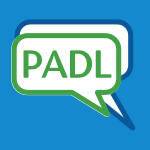 PADL-2002-Dahl #how
PADL-2002-Dahl #how- How to Talk to Your Computer so that It Will Listen (VD), pp. 3–8.
 SAC-2002-JulstromR #algorithm #robust #set
SAC-2002-JulstromR #algorithm #robust #set- Initialization is robust in evolutionary algorithms that encode spanning trees as sets of edges (BAJ, GRR), pp. 547–552.
 HPDC-2002-LaszewskiGPF #execution #grid #named #query
HPDC-2002-LaszewskiGPF #execution #grid #named #query- InfoGram: A Grid Service that Supports Both Information Queries and Job Execution (GvL, JG, CJP, ITF), pp. 333–342.
 SAT-2002-HirschK #named #satisfiability
SAT-2002-HirschK #named #satisfiability- UnitWalk: A new SAT solver that uses local search guided by unit clause elimination (EH, AK), p. 38.
 WICSA-2001-Kozaczynski #architecture #question
WICSA-2001-Kozaczynski #architecture #question- Is Architecture a Product that Can Be Packaged and Sold? (WK), p. 3–?.
 DAC-2001-PomeranzR #approach #testing
DAC-2001-PomeranzR #approach #testing- An Approach to Test Compaction for Scan Circuits that Enhances At-Speed Testing (IP, SMR), pp. 156–161.
 DATE-2001-QuasemG #fault #simulation
DATE-2001-QuasemG #fault #simulation- Exact fault simulation for systems on Silicon that protects each core’s intellectual property (MSQ, SKG), p. 804.
 VLDB-2001-BrownG #image #prototype #retrieval
VLDB-2001-BrownG #image #prototype #retrieval- A Prototype Content-Based Retrieval System that Uses Virtual Images to Save Space (LB, LG), pp. 693–694.
 ITiCSE-2001-CarboneHMG #learning #programming
ITiCSE-2001-CarboneHMG #learning #programming- Characteristics of programming exercises that lead to poor learning tendencies: Part II (AC, JH, IM, DG), pp. 93–96.
 ITiCSE-2001-VanT #evaluation #optimisation #student
ITiCSE-2001-VanT #evaluation #optimisation #student- A “frequently asked questions” management system that supports voting, built for student evaluation and optimization purposes (HLV, AT), p. 184.
 STOC-2001-Valiant #polynomial #quantum
STOC-2001-Valiant #polynomial #quantum- Quantum computers that can be simulated classically in polynomial time (LGV), pp. 114–123.
 DLT-2001-NiemannW01a #regular expression
DLT-2001-NiemannW01a #regular expression- Some Regular Languages That Are Church-Rosser Congruential (GN, JW), pp. 330–339.
 ESEC-FSE-2001-NordPSS #architecture #design
ESEC-FSE-2001-NordPSS #architecture #design- Software architecture in a changing world: developing design strategies that anticipate change (RLN, DJP, RWS, DS), pp. 309–310.
 ICSE-2001-AlurAGHKKMMW #design #model checking #named
ICSE-2001-AlurAGHKKMMW #design #model checking #named- JMOCHA: A Model Checking Tool that Exploits Design Structure (RA, LdA, RG, TAH, MK, CMK, RM, FYCM, BYW), pp. 835–836.
 ICSE-2001-Northrop #reuse
ICSE-2001-Northrop #reuse- Reuse That Pays (LMN), p. 667.
 CSL-2001-OHearnRY #data type #reasoning #source code
CSL-2001-OHearnRY #data type #reasoning #source code- Local Reasoning about Programs that Alter Data Structures (PWO, JCR, HY), pp. 1–19.
 ICLP-2001-RochaSC #on the
ICLP-2001-RochaSC #on the- On a Tabling Engine That Can Exploit Or-Parallelism (RR, FMAS, VSC), pp. 43–58.
 DAC-2000-NouraniCP
DAC-2000-NouraniCP- Synthesis-for-testability of controller-datapath pairs that use gated clocks (MN, JC, CAP), pp. 613–618.
 HT-2000-Bernstein
HT-2000-Bernstein- More than legible: on links that readers don’t want to follow (MB), pp. 216–217.
 CSEET-2000-DuleyM #education #student
CSEET-2000-DuleyM #education #student- Did We Really Teach That?: A Glimpse of Things Students (Don’t) Learn from Traditional CS1 (RD, SPM), pp. 237–245.
 PLDI-2000-RamseyJ #exception #implementation #multi
PLDI-2000-RamseyJ #exception #implementation #multi- A single intermediate language that supports multiple implementations of exceptions (NR, SLPJ), pp. 285–298.
 STOC-2000-Vadhan #complexity #interactive #on the #proving
STOC-2000-Vadhan #complexity #interactive #on the #proving- On transformation of interactive proofs that preserve the prover’s complexity (SPV), pp. 200–207.
 CHI-2000-WhittakerDHM #interface #named #what
CHI-2000-WhittakerDHM #interface #named #what- Jotmail: a voicemail interface that enables you to see what was said (SW, RD, JH, UM), pp. 89–96.
 CSCW-2000-KuzuokaOYSM #mobile #named
CSCW-2000-KuzuokaOYSM #mobile #named- GestureMan: a mobile robot that embodies a remote instructor’s actions (HK, SO, KY, KS, MM), pp. 155–162.
 CSCW-2000-KuzuokaOYYMS #mobile #named
CSCW-2000-KuzuokaOYYMS #mobile #named- GestureMan: a mobile robot that embodies a remote instructor’s actions (HK, SO, KY, AY, MM, KS), p. 354.
 ICML-2000-OSullivanLCB #algorithm #named #robust
ICML-2000-OSullivanLCB #algorithm #named #robust- FeatureBoost: A Meta-Learning Algorithm that Improves Model Robustness (JO, JL, RC, AB), pp. 703–710.
 KR-2000-CumbyR #learning #relational
KR-2000-CumbyR #learning #relational- Relational Representations that Facilitate Learning (CMC, DR), pp. 425–434.
 ICSE-2000-HayesGM #component #design #program analysis #reuse #tool support
ICSE-2000-HayesGM #component #design #program analysis #reuse #tool support- Component design of retargetable program analysis tools that reuse intermediate representations (JH, WGG, SM), pp. 356–365.
 HPCA-2000-TorrellasYN #effectiveness #integration #towards
HPCA-2000-TorrellasYN #effectiveness #integration #towards- Toward a Cost-Effective DSM Organization That Exploits Processor-Memory Integration (JT, LY, ATN), pp. 15–25.
 OSDI-2000-KimCKNMCK
OSDI-2000-KimCKNMCK- A Low-Overhead, High-Performance Unified Buffer Management Scheme That Exploits Sequential and Looping References (JMK, JC, JK, SHN, SLM, YC, CSK), pp. 119–134.
 CAV-2000-HosabettuGS #architecture #exception #verification
CAV-2000-HosabettuGS #architecture #exception #verification- Verifying Advanced Microarchitectures that Support Speculation and Exceptions (RH, GG, MKS), pp. 521–537.
 HCI-CCAD-1999-Wulf #modelling #quote #why
HCI-CCAD-1999-Wulf #modelling #quote #why- “Why did that happen?” — Building appropriate mental models on groupware functions (VW), pp. 338–342.
 HCI-EI-1999-RavidB #prototype #requirements #user interface
HCI-EI-1999-RavidB #prototype #requirements #user interface- A Method for Extracting Requirements that a User Interface Prototype Contains (AR, DMB), pp. 900–904.
 ICEIS-1999-JarvisSMMC #adaptation #what #workflow
ICEIS-1999-JarvisSMMC #adaptation #what #workflow- What Right Do You Have To Do That?-Infusing Adaptive Workflow Technology with Knowledfe about the Organisational and Autority Context of a Task (PJ, JS, AM, JPM, PWHC), pp. 240–247.
 CIKM-1999-GloverLBG #architecture
CIKM-1999-GloverLBG #architecture- Architecture of a Metasearch Engine That Supports User Information Needs (EJG, SL, WPB, CLG), pp. 210–216.
 PPDP-1999-JonesRR #assembly #garbage collection #named
PPDP-1999-JonesRR #assembly #garbage collection #named- C--: A Portable Assembly Language that Supports Garbage Collection (SLPJ, NR, FR), pp. 1–28.
 VLDB-1998-RastogiS #classification #named
VLDB-1998-RastogiS #classification #named- PUBLIC: A Decision Tree Classifier that Integrates Building and Pruning (RR, KS), pp. 404–415.
 ITiCSE-1998-MooreS #c #learning #multi #programming
ITiCSE-1998-MooreS #c #learning #multi #programming- A multimedia C programming course that supports different learning situations (poster) (SM, MS), p. 295.
 ICML-1998-BaxterTW #named
ICML-1998-BaxterTW #named- KnightCap: A Chess Programm That Learns by Combining TD(λ) with Game-Tree Search (JB, AT, LW), pp. 28–36.
 ICPR-1998-OrnesDS #network #visual notation
ICPR-1998-OrnesDS #network #visual notation- A visual neural network that learns perceptual relationships (CO, AD, JS), pp. 873–875.
 KDD-1998-CohenH #classification #using
KDD-1998-CohenH #classification #using- Joins that Generalize: Text Classification Using WHIRL (WWC, HH), pp. 169–173.
 FSE-1998-NaumovichA #algorithm #data flow #detection #parallel
FSE-1998-NaumovichA #algorithm #data flow #detection #parallel- A Conservative Data Flow Algorithm for Detecting All Pairs of Statement That May Happen in Parallel (GN, GSA), pp. 24–34.
 ASE-1997-JilaniDFMM #adaptation #component
ASE-1997-JilaniDFMM #adaptation #component- Retrieving Software Components that Minimize Adaptation Effort (LLJ, JD, MF, RM, AM), p. 255–?.
 ITiCSE-WGR-1997-TengstrandH #assessment #case study #communication
ITiCSE-WGR-1997-TengstrandH #assessment #case study #communication- Forms of assessment that develop communication skills in computer science and mathematics — a case study (AT, MH), pp. 135–136.
 STOC-1997-FreundSSW #predict #using
STOC-1997-FreundSSW #predict #using- Using and Combining Predictors That Specialize (YF, RES, YS, MKW), pp. 334–343.
 DLT-1997-IwamaT #automaton #bound #nondeterminism
DLT-1997-IwamaT #automaton #bound #nondeterminism- Tight Bounds on the Number of States of DFA’s That Are Equivalent to n-state NFA’s (KI, KT), pp. 147–154.
 ICALP-1997-NarendranO #confluence #decidability #finite #problem #string #term rewriting #word
ICALP-1997-NarendranO #confluence #decidability #finite #problem #string #term rewriting #word- The Word Matching Problem Is Undecidable For Finite Special String-Rewriting Systems That Are Confluent (PN, FO), pp. 638–648.
 CHI-1997-MoranPHCKMMZ #case study #ll #multi #quote
CHI-1997-MoranPHCKMMZ #case study #ll #multi #quote- “I’ll Get That Off the Audio”: A Case Study of Salvaging Multimedia Meeting Records (TPM, LP, SRH, PC, DK, SLM, WvM, PZ), pp. 202–209.
 HCI-CC-1997-TakedaH #question
HCI-CC-1997-TakedaH #question- Does the Circadian Rhythm of VDT Operators Cause Fluctuations of CFF Value that to Mask Fatigue Variations During Work Load? (MT, YH), pp. 563–566.
 TOOLS-PACIFIC-1997-Meyer #contract #design #object-oriented #source code
TOOLS-PACIFIC-1997-Meyer #contract #design #object-oriented #source code- Design by Contract: Making Object-Oriented Programs that Work (BM), p. 360.
 SAC-1997-Julstrom #adaptation #algorithm #search-based
SAC-1997-Julstrom #adaptation #algorithm #search-based- Adaptive operator probabilities in a genetic algorithm that applies three operators (BAJ), pp. 233–238.
 SAC-1997-Rine #reuse
SAC-1997-Rine #reuse- Success factors for software reuse that are applicable across domains and businesses (DCR), pp. 182–186.
 ICSE-1997-Weiser #matter #people #re-engineering
ICSE-1997-Weiser #matter #people #re-engineering- Software Engineering That Matters to People (Abstract) (MW), p. 538.
 HPCA-1997-AmzaCDZ #adaptation #multi #protocol
HPCA-1997-AmzaCDZ #adaptation #multi #protocol- Software DSM Protocols that Adapt between Single Writer and Multiple Writer (CA, ALC, SD, WZ), pp. 261–271.
 CAV-1997-GyurisS #model checking #on the fly #symmetry
CAV-1997-GyurisS #model checking #on the fly #symmetry- On-the-Fly Model Checking Under Fairness That Exploits Symmetry (VG, APS), pp. 232–243.
 LICS-1997-Baader #order #reduction
LICS-1997-Baader #order #reduction- Combination of Compatible Reduction Orderings that are Total on Ground Terms (FB), pp. 2–13.
 DAC-1996-EliasM #modelling #scalability
DAC-1996-EliasM #modelling #scalability- Extracting Circuit Models for Large RC Interconnections that are Accurate up to a Predefined Signal Frequency (PJHE, NPvdM), pp. 764–769.
 HT-1996-WeissVSNSDG #clustering #hypermedia #named #network
HT-1996-WeissVSNSDG #clustering #hypermedia #named #network- HyPursuit: A Hierarchical Network Search Engine that Exploits Content-Link Hypertext Clustering (RW, BV, MAS, CN, PS, AD, DKG), pp. 180–193.
 CSEE-1996-MackeKNHCCM #industrial
CSEE-1996-MackeKNHCCM #industrial- An Industry/Academic Partnership that Worked: An In Progress Report (SM, SK, JN, IH, JC, AC, BM), pp. 234–247.
 PLDI-1996-EichenbergerD #constraints #multi #pipes and filters #scheduling
PLDI-1996-EichenbergerD #constraints #multi #pipes and filters #scheduling- A Reduced Multipipeline Machine Description that Preserves Scheduling Constraints (AEE, ESD), pp. 12–22.
 AdaEurope-1996-Waroquiers #ada #exclamation #memory management
AdaEurope-1996-Waroquiers #ada #exclamation #memory management- Ada Tasking and Dynamic Memory: To Use or Not To Use, That’s a Question! (PW), pp. 460–470.
 ICPR-1996-SakanoKM #algorithm #image #search-based
ICPR-1996-SakanoKM #algorithm #image #search-based- Seeing the character images that an OCR system sees-analysis by genetic algorithm (HS, HK, NM), pp. 411–416.
 ICPR-1996-ZhangW #algorithm #parallel
ICPR-1996-ZhangW #algorithm #parallel- A parallel thinning algorithm with two-subiteration that generates one-pixel-wide skeletons (EYYZ, PSPW), pp. 457–461.
 KR-1996-Sandewall #constraints
KR-1996-Sandewall #constraints- Assessments of Ramification Methods that Use Static Domain Constraints (ES), pp. 99–110.
 OOPSLA-1996-EcklundDF #case study #identification #requirements
OOPSLA-1996-EcklundDF #case study #identification #requirements- Change Cases: Use Cases that Identify Future Requirements (EFEJ, LMLD, MJF), pp. 342–358.
 SAC-1996-GabrielliGM #design #fuzzy #process
SAC-1996-GabrielliGM #design #fuzzy #process- VLSI design of a fuzzy chip that processes 2-4 inputs every 160-320 ns whichever is the fuzzy system (AG, EG, MM), pp. 590–594.
 RTA-1996-BlooR #combinator #reduction
RTA-1996-BlooR #combinator #reduction- Combinatory Reduction Systems with Explicit Substitution that Preserve Strong Nomalisation (RB, KHR), pp. 169–183.
 ICDAR-v2-1995-StubberudKK #adaptation #image
ICDAR-v2-1995-StubberudKK #adaptation #image- Adaptive image restoration of text images that contain touching or broken characters (PAS, JK, VK), pp. 778–781.
 PLDI-1995-LoE #compilation #optimisation #parallel #scheduling
PLDI-1995-LoE #compilation #optimisation #parallel #scheduling- Improving Balanced Scheduling with Compiler Optimizations that Increase Instruction-Level Parallelism (JLL, SJE), pp. 151–162.
 STOC-1995-CuckerKKLW #on the #turing machine
STOC-1995-CuckerKKLW #on the #turing machine- On real Turing machines that toss coins (FC, MK, PK, TL, KW), pp. 335–342.
 SAC-1995-Arnow #email #network #programming #using
SAC-1995-Arnow #email #network #programming #using- :-) When you grade that: using e-mail and the network in programming courses (DMA), pp. 10–13.
 VLDB-1994-GaasterlandL
VLDB-1994-GaasterlandL- Qualified Answers That Reflect User Needs and Preferences (TG, JL), pp. 309–320.
 TRI-Ada-1994-GuemhiouiDPE #ada #code generation #design #object-oriented #profiling
TRI-Ada-1994-GuemhiouiDPE #ada #code generation #design #object-oriented #profiling- Profiling in an Object-Oriented Design Environment That Supports Ada 9X and Ada 83 Code Generation (KEG, SAD, TJP, HJCE), pp. 180–190.
 STOC-1993-WigdersonZ #bound
STOC-1993-WigdersonZ #bound- Expanders that beat the eigenvalue bound: explicit construction and applications (AW, DZ), pp. 245–251.
 HCI-ACS-1993-Marsh
HCI-ACS-1993-Marsh- Managing the Human Factors that Affect Change in Manufacturing (JLM), pp. 68–73.
 HCI-SHI-1993-AndersonJBA
HCI-SHI-1993-AndersonJBA- The Use of Computer Simulated Cases to Study Factors that Influence Clinical Practice Styles (JGA, SJJ, CB, MMA), pp. 742–747.
 HCI-SHI-1993-SaitoN #algebra #comprehension #visual notation
HCI-SHI-1993-SaitoN #algebra #comprehension #visual notation- An Algebraic System that Symbolic Expressions Can Interact with Graphical Representations for Understanding Mathematics (HS, MN), pp. 267–272.
 HCI-SHI-1993-UenoO #design #network
HCI-SHI-1993-UenoO #design #network- A Design Guideline Search Method that Uses a Neural Network (KU, KO), pp. 27–32.
 ICML-1993-Schlimmer #algorithm
ICML-1993-Schlimmer #algorithm- Efficiently Inducing Determinations: A Complete and Systematic Search Algorithm that Uses Optimal Pruning (JCS), pp. 284–290.
 SAC-1993-TanLJH #reuse #specification
SAC-1993-TanLJH #reuse #specification- The Data Derivation Model: A Program Specification Technique That Improves Reusability (HBKT, TWL, SJ, YSH), pp. 95–102.
 PPoPP-1993-HuelsbergenL #concurrent #garbage collection
PPoPP-1993-HuelsbergenL #concurrent #garbage collection- A Concurrent Copying Garbage Collector for Languages that Distinguish (Im)mutable Data (LH, JRL), pp. 73–82.
 CSL-1993-Marcinkowski #decidability #horn clause #set
CSL-1993-Marcinkowski #decidability #horn clause #set- A Horn Clause that Implies and Undecidable Set of Horn Clauses (JM), pp. 223–237.
 STOC-1992-Paturi #approximate #on the #symmetry
STOC-1992-Paturi #approximate #on the #symmetry- On the Degree of Polynomials that Approximate Symmetric Boolean Functions (Preliminary Version) (RP), pp. 468–474.
 KR-1992-Haas
KR-1992-Haas- A Reactive Planner that Uses Explanation Closure (ARH), pp. 93–102.
 ML-1992-Merckt #concept #flexibility #named
ML-1992-Merckt #concept #flexibility #named- NFDT: A System that Learns Flexible Concepts Based on Decision Trees for Numerical Attributes (TVdM), pp. 322–331.
 POPL-1992-ChowH #analysis #memory management #parallel #source code
POPL-1992-ChowH #analysis #memory management #parallel #source code- Compile-Time Analysis of Parallel Programs that Share Memory (JHC, WLHI), pp. 130–141.
 CSL-1992-Creignou #linear #problem #proving #satisfiability
CSL-1992-Creignou #linear #problem #proving #satisfiability- The Class of Problems that are Linear Equivalent to Satisfiability or a Uniform Method for Proving NP-Completeness (NC), pp. 115–133.
 PODS-1991-Matsliach #analysis #multi #performance
PODS-1991-Matsliach #analysis #multi #performance- Performance Analysis of File Organizations that Use Multi-Bucket Data Leaves with Partial Expansions (GM), pp. 164–180.
 VLDB-1991-PalmerZ #named
VLDB-1991-PalmerZ #named- Fido: A Cache That Learns to Fetch (MP, SBZ), pp. 255–264.
 CHI-1991-Ropa #comprehension #design #interface #multi
CHI-1991-Ropa #comprehension #design #interface #multi- Computers as communicators: designing a multimedia interface that facilitates cultural understanding among sixth graders (AR), pp. 429–430.
 CAiSE-1991-SeppanenHL #design #named #tool support #towards
CAiSE-1991-SeppanenHL #design #named #tool support #towards- SPADE — Towards Case Tools That Can Guide Design (VS, MH, RL), pp. 222–239.
 SIGIR-1991-Korfhage #query #question
SIGIR-1991-Korfhage #query #question- To See, or Not to See: Is That the Query? (RK), pp. 134–141.
 PLILP-1991-GrahamK #functional #imperative
PLILP-1991-GrahamK #functional #imperative- Domesticating Imperative Constructs So That They Can Live in a Functional World (TCNG, GK), pp. 51–62.
 POPL-1991-ClingerR #metaprogramming
POPL-1991-ClingerR #metaprogramming- Macros That Work (WDC, JR), pp. 155–162.
 ESEC-1991-Voas #impact analysis #predict
ESEC-1991-Voas #impact analysis #predict- A Dynamic Failure Model for Predicting the Impact that a Program Location has on the Program (JMV), pp. 308–331.
 PPoPP-1991-CostaWY #named #parallel #prolog
PPoPP-1991-CostaWY #named #parallel #prolog- Andorra-I: A Parallel Prolog System that Transparently Exploits both And- and Or-Parallelism (VSC, DHDW, RY), pp. 83–93.
 TAV-1991-LongC #analysis #concurrent #data flow
TAV-1991-LongC #analysis #concurrent #data flow- Data Flow Analysis of Concurrent Systems that Use the Rendezvous Model of Synchronization (DLL, LAC), pp. 21–35.
 ECHT-1990-Bernstein #hypermedia
ECHT-1990-Bernstein #hypermedia- An Apprentice That Discovers Hypertext Links (MB), pp. 212–223.
 VLDB-1990-KempRS #information management #maintenance #multi
VLDB-1990-KempRS #information management #maintenance #multi- Right-, left- and multi-linear rule transformations that maintain context information (DBK, KR, ZS), pp. 380–391.
 SIGIR-1990-Sacks-DavisW #analysis #documentation #retrieval #using
SIGIR-1990-Sacks-DavisW #analysis #documentation #retrieval #using- Using Syntactic Analysis in a Document Retrieval System that uses Signature Files (RSD, PW), pp. 179–192.
 OOPSLA-ECOOP-1990-LeavensW #object-oriented #reasoning #source code #type system
OOPSLA-ECOOP-1990-LeavensW #object-oriented #reasoning #source code #type system- Reasoning about Object-Oriented Programs that Use Subtypes (GTL, WEW), pp. 212–223.
 CLP-1990-Fribourg90 #execution #induction #logic programming #prolog #proving #source code
CLP-1990-Fribourg90 #execution #induction #logic programming #prolog #proving #source code- Extracting Logic Programs from Proofs that Use Extended Prolog Execution and Induction (LF), pp. 685–699.
 HT-1989-Nielsen #hypermedia #matter #usability
HT-1989-Nielsen #hypermedia #matter #usability- The Matters that Really Matter for Hypertext Usability (JN), pp. 239–248.
 STOC-1989-BlumK #design #source code
STOC-1989-BlumK #design #source code- Designing Programs That Check Their Work (MB, SK), pp. 86–97.
 ML-1989-PagalloH #algorithm
ML-1989-PagalloH #algorithm- Two Algorithms That Learn DNF by Discovering Relevant Features (GP, DH), pp. 119–123.
 ML-1989-WhiteheadB
ML-1989-WhiteheadB- A Role for Anticipation in Reactive Systems that Learn (SDW, DHB), pp. 354–357.
 RTA-1989-Strandh #equation #performance #source code
RTA-1989-Strandh #equation #performance #source code- Classes of Equational Programs that Compile into Efficient Machine Code (RS), pp. 449–461.
 DAC-1988-ObermeierK #layout #physics
DAC-1988-ObermeierK #layout #physics- An Electrical Optimizer that Considers Physical Layout (FWO, RHK), pp. 453–459.
 ML-1988-Sammut #algorithm #evaluation
ML-1988-Sammut #algorithm #evaluation- Experimental Results from an Evaluation of Algorithms that Learn to Control Dynamic Systems (CS), pp. 437–443.
 VLDB-1987-Dayal #approach #quantifier #query
VLDB-1987-Dayal #approach #quantifier #query- Of Nests and Trees: A Unified Approach to Processing Queries That Contain Nested Subqueries, Aggregates, and Quantifiers (UD), pp. 197–208.
 STOC-1987-Venkateswaran
STOC-1987-Venkateswaran- Properties that Characterize LOGCFL (HV), pp. 141–150.
 DAC-1986-LinA #bound #layout #named
DAC-1986-LinA #bound #layout #named- Minplex — a compactor that minimizes the bounding rectangle and individual rectangles in a layout (SLL, JA), pp. 123–130.
 ICALP-1986-Willard #bound #problem #query
ICALP-1986-Willard #bound #problem #query- Lower Bounds for Dynamic Range Query Problems That Permit Subtraction (Extended Abstract) (DEW), pp. 444–453.
 CSCW-1986-Neches #people #tool support
CSCW-1986-Neches #people #tool support- Tools help people co-operate only to the extent that they help them share goals and terminology (RN), pp. 192–201.
 CADE-1986-CherifaL #implementation #polynomial #term rewriting #termination
CADE-1986-CherifaL #implementation #polynomial #term rewriting #termination- An Actual Implementation of a Procedure That Mechanically Proves Termination of Rewriting Systems Based on Inequalities Between Polynomial Interpretations (ABC, PL), pp. 42–51.
 VLDB-1985-FaloutsosC #design #query
VLDB-1985-FaloutsosC #design #query- Design of a Signature File Method that Accounts for Non-Uniform Occurrence and Query Frequencies (CF, SC), pp. 165–170.
 FPCA-1985-ODonnell85 #architecture
FPCA-1985-ODonnell85 #architecture- An Architecture that Efficiently Updates Associative Aggregates in Applicative Programing Languages (JTO), pp. 164–189.
 POPL-1985-LichtensteinP #concurrent #finite #linear #source code #specification
POPL-1985-LichtensteinP #concurrent #finite #linear #source code #specification- Checking That Finite State Concurrent Programs Satisfy Their Linear Specification (OL, AP), pp. 97–107.
 LFP-1984-Bellegarde #sequence #term rewriting
LFP-1984-Bellegarde #sequence #term rewriting- Rewriting Systems on FP Expressions that Reduce the Number of Sequences They Yield (FB), pp. 63–73.
 ICSE-1984-Reiss #development #multi #named
ICSE-1984-Reiss #development #multi #named- PECAN: Program Development Systems That Support Multiple Views (SPR), pp. 323–333.
 CADE-1984-Stickel #case study #commutative #proving #theorem proving
CADE-1984-Stickel #case study #commutative #proving #theorem proving- A Case Study of Theorem Proving by the Knuth-Bendix Method: Discovering That x³=x Implies Ring Commutativity (MES), pp. 248–258.
 SCC-1982-LaLondeR #compilation #flexibility
SCC-1982-LaLondeR #compilation #flexibility- A Flexible Compiler Structure That Allows Dynamic Phase Ordering (WRL, JdR), pp. 134–139.
 STOC-1981-HongR #graph
STOC-1981-HongR #graph- Graphs that Are Almost Binary Trees (Preliminary Version) (JWH, ALR), pp. 334–341.
 VLDB-1980-FreilichS
VLDB-1980-FreilichS- Managing Systems That Manage Data (LF, PJS), p. 155.
 GG-1978-Pfaltz #2d #graph grammar #network #set
GG-1978-Pfaltz #2d #graph grammar #network #set- A Graph Grammar that Describes the Set of Two-Dimensional Surface Networks (JLP), pp. 379–388.
 STOC-1975-OppenC #data type #proving #source code
STOC-1975-OppenC #data type #proving #source code- Proving Assertions about Programs that Manipulate Data Structures (DCO, SAC), pp. 107–116.
 SOSP-1975-CoffmanM #scheduling
SOSP-1975-CoffmanM #scheduling- Selecting a Scheduling Rule that Meets Pre-Specified Response Time Demands (EGCJ, IM), pp. 187–191.
 DAC-1974-Ressler
DAC-1974-Ressler- A simple computer-aided artwork system that works (DGR), pp. 92–97.
 DAC-1973-Freitag
DAC-1973-Freitag- Some things that did not happen in software DA (HF), p. 61.
 STOC-1973-LynchMF #set
STOC-1973-LynchMF #set- Sets that Don’t Help (NAL, ARM, MJF), pp. 130–134.
 CASE-2015-Sakakura #framework
CASE-2015-Sakakura #framework DATE-2015-FuggerNNS #modelling #physics #towards
DATE-2015-FuggerNNS #modelling #physics #towards SANER-2015-MondalRS #mining #named #refactoring
SANER-2015-MondalRS #mining #named #refactoring STOC-2015-AaronsonA #named #problem #quantum
STOC-2015-AaronsonA #named #problem #quantum DLT-2015-OttoK #automaton #order
DLT-2015-OttoK #automaton #order ICFP-2015-KarachaliasSVJ #data type #lazy evaluation #pattern matching
ICFP-2015-KarachaliasSVJ #data type #lazy evaluation #pattern matching CHI-2015-AdibMKKM #monitoring #smarttech
CHI-2015-AdibMKKM #monitoring #smarttech CHI-2015-Clarke #design
CHI-2015-Clarke #design CHI-2015-EslamiRVAVKHS #algorithm #quote #reasoning
CHI-2015-EslamiRVAVKHS #algorithm #quote #reasoning CHI-2015-GennipHM #design #interactive #memory management
CHI-2015-GennipHM #design #interactive #memory management CHI-2015-Gilbert #abstraction
CHI-2015-Gilbert #abstraction CHI-2015-JohnsonNW #all about #case study #experience #game studies #video
CHI-2015-JohnsonNW #all about #case study #experience #game studies #video CHI-2015-LaseckiKRSBB #crowdsourcing #named #sketching #user interface
CHI-2015-LaseckiKRSBB #crowdsourcing #named #sketching #user interface CHI-2015-SchmidtKMUKCB #artificial reality #named #simulation
CHI-2015-SchmidtKMUKCB #artificial reality #named #simulation CHI-2015-StawarzCB #design #self #smarttech
CHI-2015-StawarzCB #design #self #smarttech DUXU-DD-2015-GuoSYL #people
DUXU-DD-2015-GuoSYL #people DUXU-DD-2015-Lera #approach #design #interactive #matter
DUXU-DD-2015-Lera #approach #design #interactive #matter HCI-IT-2015-LeeJ #personalisation
HCI-IT-2015-LeeJ #personalisation HIMI-IKC-2015-ZhangT #design #game studies
HIMI-IKC-2015-ZhangT #design #game studies ICEIS-v1-2015-SilvaBZ
ICEIS-v1-2015-SilvaBZ RecSys-2015-AuteriT #linear #personalisation
RecSys-2015-AuteriT #linear #personalisation SAC-2015-KaplanisKSMT
SAC-2015-KaplanisKSMT ESEC-FSE-2015-MutluTL #detection #javascript #matter
ESEC-FSE-2015-MutluTL #detection #javascript #matter ICSE-v1-2015-NistorCRL #detection #named #performance #problem
ICSE-v1-2015-NistorCRL #detection #named #performance #problem ASPLOS-2015-MalkaABT #named #performance
ASPLOS-2015-MalkaABT #named #performance SOSP-2015-CurtsingerB #named #profiling
SOSP-2015-CurtsingerB #named #profiling DocEng-2014-HailpernVD14a #ll #named
DocEng-2014-HailpernVD14a #ll #named HT-2014-KoidlCW #independence #personalisation
HT-2014-KoidlCW #independence #personalisation VLDB-2014-FuOPZ #component #declarative #javascript #named #using
VLDB-2014-FuOPZ #component #declarative #javascript #named #using VLDB-2014-GeertsMPS #exclamation #open source
VLDB-2014-GeertsMPS #exclamation #open source MSR-2014-GuoLM #exclamation #question
MSR-2014-GuoLM #exclamation #question MSR-2014-KechagiaS #exception
MSR-2014-KechagiaS #exception STOC-2014-GoldreichW #algorithm #on the
STOC-2014-GoldreichW #algorithm #on the CHI-2014-BardzellBT #quote #self #tool support
CHI-2014-BardzellBT #quote #self #tool support CHI-2014-StawarzCB #design #effectiveness #exclamation
CHI-2014-StawarzCB #design #effectiveness #exclamation CSCW-2014-MitraG #people #predict
CSCW-2014-MitraG #people #predict CSCW-2014-OleksikMJ #collaboration #design
CSCW-2014-OleksikMJ #collaboration #design DHM-2014-IshidaSK
DHM-2014-IshidaSK DUXU-DP-2014-PosadaHB #motivation #on the #user interface
DUXU-DP-2014-PosadaHB #motivation #on the #user interface DUXU-TMT-2014-Kurosu #user interface
DUXU-TMT-2014-Kurosu #user interface HCI-AS-2014-HidakaO
HCI-AS-2014-HidakaO HCI-AS-2014-SatoYSR #collaboration
HCI-AS-2014-SatoYSR #collaboration LCT-TRE-2014-TzanavariMCP #experience #performance #user interface #using
LCT-TRE-2014-TzanavariMCP #experience #performance #user interface #using ECIR-2014-Koolen #exclamation #ll #quote
ECIR-2014-Koolen #exclamation #ll #quote KDIR-2014-OkumuraYSO #identification #twitter
KDIR-2014-OkumuraYSO #identification #twitter PPDP-2014-CheneyAA #database #query
PPDP-2014-CheneyAA #database #query POPL-2014-FarzanKP #proving
POPL-2014-FarzanKP #proving SAC-2014-ChallcoI #authoring #design #learning #personalisation #towards
SAC-2014-ChallcoI #authoring #design #learning #personalisation #towards SAC-2014-KumeNNS #dynamic analysis #framework
SAC-2014-KumeNNS #dynamic analysis #framework FSE-2014-XiaoCK #analysis #architecture #named #quality #tool support
FSE-2014-XiaoCK #analysis #architecture #named #quality #tool support PPoPP-2014-AgrawalFSSU #data type #parallel #scheduling #source code
PPoPP-2014-AgrawalFSSU #data type #parallel #scheduling #source code PPoPP-2014-RodriguesJDH #algorithm #clustering #interface #named #programming
PPoPP-2014-RodriguesJDH #algorithm #clustering #interface #named #programming IJCAR-2014-EhlersL #approximate #finite #incremental #logic #satisfiability
IJCAR-2014-EhlersL #approximate #finite #incremental #logic #satisfiability ICDAR-2013-Deryagin #evaluation #performance #segmentation
ICDAR-2013-Deryagin #evaluation #performance #segmentation ICDAR-2013-KimuraHUIOK
ICDAR-2013-KimuraHUIOK VLDB-2013-ShuteVSHWROLMECRSA #database #distributed #named #scalability #sql
VLDB-2013-ShuteVSHWROLMECRSA #database #distributed #named #scalability #sql ITiCSE-2013-IsomottonenTC #self
ITiCSE-2013-IsomottonenTC #self PASTE-2013-YasugiMU #evaluation #performance
PASTE-2013-YasugiMU #evaluation #performance ICALP-v1-2013-LauriaPRT #complexity #graph #proving
ICALP-v1-2013-LauriaPRT #complexity #graph #proving LATA-2013-BabaaliK #automaton #on the #product line
LATA-2013-BabaaliK #automaton #on the #product line CHI-2013-KulkarniC #case study #social
CHI-2013-KulkarniC #case study #social CHI-2013-WycheC #design #how #quote
CHI-2013-WycheC #design #how #quote CSCW-2013-SleeperBDMWC #facebook #self
CSCW-2013-SleeperBDMWC #facebook #self DHM-HB-2013-SenanayakeG
DHM-HB-2013-SenanayakeG DHM-SET-2013-MurataKMH
DHM-SET-2013-MurataKMH DUXU-CXC-2013-MarcusPL #design #learning #mobile #persuasion #user interface
DUXU-CXC-2013-MarcusPL #design #learning #mobile #persuasion #user interface DUXU-NTE-2013-MarcusA #design #mobile #persuasion #user interface
DUXU-NTE-2013-MarcusA #design #mobile #persuasion #user interface DUXU-WM-2013-MarcusSC #design #mobile #persuasion #user interface
DUXU-WM-2013-MarcusSC #design #mobile #persuasion #user interface HCI-AS-2013-LucenaMPF #design
HCI-AS-2013-LucenaMPF #design HCI-III-2013-KunoST
HCI-III-2013-KunoST HCI-III-2013-SatoWYR #coordination #named
HCI-III-2013-SatoWYR #coordination #named HCI-IMT-2013-HenschenL #design #interface #network
HCI-IMT-2013-HenschenL #design #interface #network HIMI-HSM-2013-KarashimaN #behaviour #safety
HIMI-HSM-2013-KarashimaN #behaviour #safety HIMI-HSM-2013-MizutaniKSASUKSI #development #eye tracking #visual notation
HIMI-HSM-2013-MizutaniKSASUKSI #development #eye tracking #visual notation OCSC-2013-OtakeUS #game studies #social
OCSC-2013-OtakeUS #game studies #social VISSOFT-2013-BradleyH #composition #development #named #navigation
VISSOFT-2013-BradleyH #composition #development #named #navigation ICEIS-v1-2013-SilveiraMAC #development #library #matrix #memory management #process
ICEIS-v1-2013-SilveiraMAC #development #library #matrix #memory management #process ICEIS-v3-2013-SzirbikB #architecture #network
ICEIS-v3-2013-SzirbikB #architecture #network ICML-c3-2013-CovielloMCL #exclamation #performance
ICML-c3-2013-CovielloMCL #exclamation #performance KDD-2013-Etzioni
KDD-2013-Etzioni OOPSLA-2013-CarbinMR #hardware #reliability #source code #verification
OOPSLA-2013-CarbinMR #hardware #reliability #source code #verification SAC-2013-YuFH
SAC-2013-YuFH CGO-2013-RenALMPS #data type #parallel
CGO-2013-RenALMPS #data type #parallel HPDC-2013-Shaw #named #simulation
HPDC-2013-Shaw #named #simulation HPDC-2013-ZhouTKB #automation #debugging #detection #named #scalability
HPDC-2013-ZhouTKB #automation #debugging #detection #named #scalability HT-2012-ComarelaCAB #comprehension #twitter
HT-2012-ComarelaCAB #comprehension #twitter ICSM-2012-BasitAHJ
ICSM-2012-BasitAHJ PEPM-2012-HirzelG #metaprogramming #using
PEPM-2012-HirzelG #metaprogramming #using PEPM-2012-Katayama #functional #induction #programming #source code
PEPM-2012-Katayama #functional #induction #programming #source code ICALP-v2-2012-BojanczykP #infinity #regular expression #set
ICALP-v2-2012-BojanczykP #infinity #regular expression #set ICFP-2012-PereraACL #functional #source code
ICFP-2012-PereraACL #functional #source code CHI-2012-BadshahGMPT #feedback #named
CHI-2012-BadshahGMPT #feedback #named CHI-2012-BirnholtzBF #behaviour
CHI-2012-BirnholtzBF #behaviour CHI-2012-CoyleMKFB #exclamation #experience
CHI-2012-CoyleMKFB #exclamation #experience CHI-2012-LewisL #community
CHI-2012-LewisL #community CHI-2012-SugiuraLOWMSII #named
CHI-2012-SugiuraLOWMSII #named CHI-2012-SzafirM #adaptation #design #exclamation #monitoring
CHI-2012-SzafirM #adaptation #design #exclamation #monitoring CHI-2012-TeoJB #layout #named
CHI-2012-TeoJB #layout #named CSCW-2012-Gilbert
CSCW-2012-Gilbert CSCW-2012-SchroterADK #communication
CSCW-2012-SchroterADK #communication CIKM-2012-AltingovdeBCOSU #query #web
CIKM-2012-AltingovdeBCOSU #query #web CIKM-2012-Diaz-AvilesDGSN #online #recommendation #topic #twitter #what
CIKM-2012-Diaz-AvilesDGSN #online #recommendation #topic #twitter #what CIKM-2012-ShenCL
CIKM-2012-ShenCL ICML-2012-PrasseSLS #email #identification #learning #regular expression
ICML-2012-PrasseSLS #email #identification #learning #regular expression ICML-2012-Wagstaff #machine learning #matter
ICML-2012-Wagstaff #machine learning #matter KDD-2012-BorgholACEM #video
KDD-2012-BorgholACEM #video KR-2012-BaralD #automation #how #learning #programming #set
KR-2012-BaralD #automation #how #learning #programming #set RecSys-2012-ChhabraR #named #recommendation
RecSys-2012-ChhabraR #named #recommendation ISSTA-2012-JensenJM
ISSTA-2012-JensenJM RTA-2012-CousineauH #proving #semantics
RTA-2012-CousineauH #proving #semantics CBSE-2011-LauSST #component #data-driven
CBSE-2011-LauSST #component #data-driven ITiCSE-2011-BellCCDH #programming #student
ITiCSE-2011-BellCCDH #programming #student ICPC-J-2009-HammadCM11 #automation #evolution #identification #traceability
ICPC-J-2009-HammadCM11 #automation #evolution #identification #traceability LATA-2011-ReidenbachS #memory management #scheduling #word
LATA-2011-ReidenbachS #memory management #scheduling #word CHI-2011-LeshedS #case study #experience #quote #tool support
CHI-2011-LeshedS #case study #experience #quote #tool support CHI-2011-McGee-LennonWMBH
CHI-2011-McGee-LennonWMBH CHI-2011-ShklovskiK #internet #online
CHI-2011-ShklovskiK #internet #online CSCW-2011-NewmanLMRM #challenge #facebook #health #network #online #problem #social #using
CSCW-2011-NewmanLMRM #challenge #facebook #health #network #online #problem #social #using DUXU-v2-2011-Marcus #design #health #mobile #persuasion #user interface
DUXU-v2-2011-Marcus #design #health #mobile #persuasion #user interface DUXU-v2-2011-WatanabeYHA #user interface #web
DUXU-v2-2011-WatanabeYHA #user interface #web IDGD-2011-WelkerGS #design #evaluation #web
IDGD-2011-WelkerGS #design #evaluation #web VISSOFT-2011-WalnyHDSC #development #diagrams #lifecycle #sketching
VISSOFT-2011-WalnyHDSC #development #diagrams #lifecycle #sketching CIKM-2011-Karger #people #user interface
CIKM-2011-Karger #people #user interface KDIR-2011-PaquetVG
KDIR-2011-PaquetVG KEOD-2011-Tinsley #ontology #realtime
KEOD-2011-Tinsley #ontology #realtime SIGIR-2011-Hofmann #online
SIGIR-2011-Hofmann #online ECMFA-2011-Tolvanen #domain-specific language #modelling
ECMFA-2011-Tolvanen #domain-specific language #modelling ECOOP-2011-RichardsHBV #javascript #scalability
ECOOP-2011-RichardsHBV #javascript #scalability RE-2011-WeverM #analysis #effectiveness #question #what
RE-2011-WeverM #analysis #effectiveness #question #what SAC-2011-KimDB #dependence #diagrams #identification #state machine #uml
SAC-2011-KimDB #dependence #diagrams #identification #state machine #uml SAC-2011-SantosaMK #approach #named #programming #search-based
SAC-2011-SantosaMK #approach #named #programming #search-based ICSE-2011-FeinRSMGGBCLSMMSD #automation #deployment #tool support #using
ICSE-2011-FeinRSMGGBCLSMMSD #automation #deployment #tool support #using ICSE-2011-HolmesN #behaviour #identification
ICSE-2011-HolmesN #behaviour #identification LDTA-2011-PlasmeijerLAM #coordination
LDTA-2011-PlasmeijerLAM #coordination ICST-2011-FraserA #how #matter
ICST-2011-FraserA #how #matter RTA-2011-AvanziniEM #exponential #order #term rewriting
RTA-2011-AvanziniEM #exponential #order #term rewriting DAC-2010-Breuer #bound #hardware
DAC-2010-Breuer #bound #hardware DATE-2010-ChePC #compilation #manycore #source code
DATE-2010-ChePC #compilation #manycore #source code SIGMOD-2010-VartakRR #assurance #generative #named #query
SIGMOD-2010-VartakRR #assurance #generative #named #query TACAS-2010-VillardLC
TACAS-2010-VillardLC MSR-2010-RahmanBD #named #question #smell #what
MSR-2010-RahmanBD #named #question #smell #what CIAA-2010-TirnaucaT #automaton #identification #query
CIAA-2010-TirnaucaT #automaton #identification #query DLT-2010-OttoPM #automaton #on the
DLT-2010-OttoPM #automaton #on the CSCW-2010-Rode
CSCW-2010-Rode ICEIS-AIDSS-2010-TomeAC #architecture #enterprise #experience #named
ICEIS-AIDSS-2010-TomeAC #architecture #enterprise #experience #named MoDELS-v1-2010-GoldsbyC #automation #behaviour #modelling #uml
MoDELS-v1-2010-GoldsbyC #automation #behaviour #modelling #uml SAC-2010-BaudetD #algorithm #permutation
SAC-2010-BaudetD #algorithm #permutation SAC-2010-CostaNSFL #adaptation #framework #self
SAC-2010-CostaNSFL #adaptation #framework #self SAC-2010-LeungHB #constraints #mining #nondeterminism
SAC-2010-LeungHB #constraints #mining #nondeterminism FSE-2010-BegelKZ #named
FSE-2010-BegelKZ #named PPoPP-2010-ZyulkyarovHUCV #debugging #memory management #source code #transaction
PPoPP-2010-ZyulkyarovHUCV #debugging #memory management #source code #transaction LICS-2010-BojanczykL #automaton #xpath
LICS-2010-BojanczykL #automaton #xpath LICS-2010-Herbelin #logic #markov #principle
LICS-2010-Herbelin #logic #markov #principle DAC-2009-George #how
DAC-2009-George #how CSEET-2009-Rosso-Llopart #education #learning #re-engineering
CSEET-2009-Rosso-Llopart #education #learning #re-engineering ICPC-2009-HammadCM #automation #identification #traceability
ICPC-2009-HammadCM #automation #identification #traceability SCAM-2009-BinkleyH #clustering #dependence #identification #scalability
SCAM-2009-BinkleyH #clustering #dependence #identification #scalability CHI-2009-BergmanTBCW #using
CHI-2009-BergmanTBCW #using CHI-2009-ConsolvoML #behaviour #design
CHI-2009-ConsolvoML #behaviour #design CHI-2009-PirolliWS #wiki
CHI-2009-PirolliWS #wiki CHI-2009-TakayamaGN #aspect-oriented #social
CHI-2009-TakayamaGN #aspect-oriented #social CHI-2009-Zimmerman #design #people
CHI-2009-Zimmerman #design #people HCD-2009-BaileyWNK #metric #testing #usability
HCD-2009-BaileyWNK #metric #testing #usability HCD-2009-Park09b #case study #design #information management
HCD-2009-Park09b #case study #design #information management HCD-2009-PylaHPASH #case study #evaluation #experience #how
HCD-2009-PylaHPASH #case study #evaluation #experience #how HCI-NIMT-2009-Allison #adaptation #generative #human-computer #interface
HCI-NIMT-2009-Allison #adaptation #generative #human-computer #interface HCI-NIMT-2009-ChenOYFT #communication
HCI-NIMT-2009-ChenOYFT #communication HCI-NT-2009-HaywoodB #quote
HCI-NT-2009-HaywoodB #quote HCI-VAD-2009-FicarraR #human-computer #interactive
HCI-VAD-2009-FicarraR #human-computer #interactive OCSC-2009-Raybourn #game studies
OCSC-2009-Raybourn #game studies CIKM-2009-ArmstrongMWZ #ad hoc #retrieval
CIKM-2009-ArmstrongMWZ #ad hoc #retrieval POPL-2009-GotsmanCPV #algorithm #proving
POPL-2009-GotsmanCPV #algorithm #proving SAC-2009-GamaRS #algorithm #data type
SAC-2009-GamaRS #algorithm #data type ISMM-2009-JulaR #locality #memory management
ISMM-2009-JulaR #locality #memory management CASE-2008-FujitaHSHITNTYN #multi
CASE-2008-FujitaHSHITNTYN #multi FoSSaCS-2008-KikuchiL #normalisation
FoSSaCS-2008-KikuchiL #normalisation AFL-2008-MasopustM #automaton #multi #on the
AFL-2008-MasopustM #automaton #multi #on the ICEIS-ISAS2-2008-FernandesAS #performance #programming #release planning
ICEIS-ISAS2-2008-FernandesAS #performance #programming #release planning CIKM-2008-LoekitoB #behaviour #mining
CIKM-2008-LoekitoB #behaviour #mining CIKM-2008-ZhouYM #biology
CIKM-2008-ZhouYM #biology KDD-2008-MadaniH #learning #on the
KDD-2008-MadaniH #learning #on the RE-2008-WeissM #requirements #security
RE-2008-WeissM #requirements #security ASE-2007-Grechanik #component #fault #xml
ASE-2007-Grechanik #component #fault #xml DAC-2007-Ferguson
DAC-2007-Ferguson ITiCSE-2007-Dickinson07a #diagrams
ITiCSE-2007-Dickinson07a #diagrams ITiCSE-2007-LangML #student
ITiCSE-2007-LangML #student ICSM-2007-OezbekP #comprehension #documentation #named #source code
ICSM-2007-OezbekP #comprehension #documentation #named #source code SCAM-2007-NaylorR
SCAM-2007-NaylorR PLDI-2007-HaRDRRPCW #black box #component #fault
PLDI-2007-HaRDRRPCW #black box #component #fault SAS-2007-CalcagnoDOY #analysis
SAS-2007-CalcagnoDOY #analysis STOC-2007-PeikertR #worst-case
STOC-2007-PeikertR #worst-case CHI-2007-VasalouJP #online #self
CHI-2007-VasalouJP #online #self DHM-2007-KanezashiMO #difference #interface
DHM-2007-KanezashiMO #difference #interface DHM-2007-LinP #experience #modelling #user interface
DHM-2007-LinP #experience #modelling #user interface HCI-IDU-2007-Lee #design #interface #usability
HCI-IDU-2007-Lee #design #interface #usability HIMI-IIE-2007-TaguchiAT #analysis
HIMI-IIE-2007-TaguchiAT #analysis HIMI-MTT-2007-YonemuraYTO #analysis #communication #visual notation
HIMI-MTT-2007-YonemuraYTO #analysis #communication #visual notation OCSC-2007-ChoY #how #programming
OCSC-2007-ChoY #how #programming POPL-2007-CookGPRV #proving #source code
POPL-2007-CookGPRV #proving #source code RE-2007-MaidenNKSG #requirements
RE-2007-MaidenNKSG #requirements SAC-2007-RuffoS #peer-to-peer #recommendation
SAC-2007-RuffoS #peer-to-peer #recommendation SPLC-2007-TischerMKG #product line #why
SPLC-2007-TischerMKG #product line #why LICS-2007-Escardo #infinity #performance #set
LICS-2007-Escardo #infinity #performance #set RTA-2007-DowekH #proving
RTA-2007-DowekH #proving QoSA-2006-Stafford #documentation
QoSA-2006-Stafford #documentation DATE-2006-PomeranzR #detection #fault #generative #testing
DATE-2006-PomeranzR #detection #fault #generative #testing ITiCSE-2006-Quade #hybrid #learning #re-engineering
ITiCSE-2006-Quade #hybrid #learning #re-engineering CHI-2006-ConsolvoESL #design #physics #process #requirements
CHI-2006-ConsolvoESL #design #physics #process #requirements CSCW-2006-HindsM #coordination #distributed #social
CSCW-2006-HindsM #coordination #distributed #social SIGAda-2006-MarkowRB
SIGAda-2006-MarkowRB CAiSE-2006-DourdasZMJZ #query #requirements
CAiSE-2006-DourdasZMJZ #query #requirements ICML-2006-WarmuthLR #algorithm
ICML-2006-WarmuthLR #algorithm ICPR-v1-2006-AdachiKO #estimation #fault #reliability
ICPR-v1-2006-AdachiKO #estimation #fault #reliability KR-2006-BaierM #on the #source code
KR-2006-BaierM #on the #source code SIGIR-2006-MurrayLC #behaviour #modelling #predict #query
SIGIR-2006-MurrayLC #behaviour #modelling #predict #query SIGIR-2006-NenkovaVM #composition #multi #summary
SIGIR-2006-NenkovaVM #composition #multi #summary SAC-2006-ChenJH #detection #fault #generative #multi #sequence #testing
SAC-2006-ChenJH #detection #fault #generative #multi #sequence #testing SAC-2006-ZamolotskikhDC #bias #classification
SAC-2006-ZamolotskikhDC #bias #classification PPoPP-2006-ChanGGT #architecture #communication #multi
PPoPP-2006-ChanGGT #architecture #communication #multi PPoPP-2006-LiuTCASRT #compilation #named
PPoPP-2006-LiuTCASRT #compilation #named DRR-2005-RusuG #challenge #image #on the
DRR-2005-RusuG #challenge #image #on the ITiCSE-2005-Ludi #process #re-engineering #student
ITiCSE-2005-Ludi #process #re-engineering #student MSR-2005-YingWA #eclipse #mining #repository #source code
MSR-2005-YingWA #eclipse #mining #repository #source code STOC-2005-BenjaminiSW
STOC-2005-BenjaminiSW CIAA-J-2004-GeserHWZ05 #automaton #finite #string #term rewriting #termination
CIAA-J-2004-GeserHWZ05 #automaton #finite #string #term rewriting #termination ICALP-2005-BeaudryLT #regular expression
ICALP-2005-BeaudryLT #regular expression CHI-2005-CockburnSW #automation #interface #testing
CHI-2005-CockburnSW #automation #interface #testing CAiSE-2005-CabotT #constraints #ocl
CAiSE-2005-CabotT #constraints #ocl ESEC-FSE-2005-HordijkW #design #maintenance #research
ESEC-FSE-2005-HordijkW #design #maintenance #research CADE-2005-Dowek #consistency #question #what
CADE-2005-Dowek #consistency #question #what RTA-2005-GeserHWZ #automaton #linear #on the #term rewriting #termination
RTA-2005-GeserHWZ #automaton #linear #on the #term rewriting #termination DAC-2004-AlpertHHQ #flexibility #layout #performance #physics
DAC-2004-AlpertHHQ #flexibility #layout #performance #physics DAC-2004-RawatJJDGPMHS
DAC-2004-RawatJJDGPMHS DATE-v1-2004-BrunelNFGL #development #named #process
DATE-v1-2004-BrunelNFGL #development #named #process DATE-v1-2004-PomeranzVRS #detection #fault
DATE-v1-2004-PomeranzVRS #detection #fault SIGMOD-2004-IdreosKT #ad hoc #named #network #query
SIGMOD-2004-IdreosKT #ad hoc #named #network #query CSEET-2004-Jenkins #named
CSEET-2004-Jenkins #named ITiCSE-2004-Cliff #education #generative #question
ITiCSE-2004-Cliff #education #generative #question ITiCSE-WGR-2004-RountreeRRH #predict
ITiCSE-WGR-2004-RountreeRRH #predict STOC-2004-Fischer #graph #morphism #testing
STOC-2004-Fischer #graph #morphism #testing CIAA-2004-GeserHWZ #automaton #finite #string #termination
CIAA-2004-GeserHWZ #automaton #finite #string #termination AFP-2004-PlasmeijerW04 #functional
AFP-2004-PlasmeijerW04 #functional CSCW-2004-MatsushitaIOSKN #collaboration
CSCW-2004-MatsushitaIOSKN #collaboration CSCW-2004-WangB #collaboration #concept #design #industrial
CSCW-2004-WangB #collaboration #concept #design #industrial ICEIS-v4-2004-RodriguezDGI #architecture #monitoring #online #performance
ICEIS-v4-2004-RodriguezDGI #architecture #monitoring #online #performance ICPR-v3-2004-ChambonC #algorithm #robust #towards
ICPR-v3-2004-ChambonC #algorithm #robust #towards SIGIR-2004-McLaughlinH #algorithm #collaboration #evaluation #experience #metric #user interface
SIGIR-2004-McLaughlinH #algorithm #collaboration #evaluation #experience #metric #user interface UML-2004-CabotT #constraints
UML-2004-CabotT #constraints GPCE-2004-McDirmidH #aspect-oriented #named #source code
GPCE-2004-McDirmidH #aspect-oriented #named #source code IJCAR-2004-BaaderGT #decidability #logic #problem #word
IJCAR-2004-BaaderGT #decidability #logic #problem #word SAT-2004-Connamacher #constraints #problem #random
SAT-2004-Connamacher #constraints #problem #random ITiCSE-2003-Becker03b #student
ITiCSE-2003-Becker03b #student ITiCSE-2003-Garvin-DoxasB #interactive #learning
ITiCSE-2003-Garvin-DoxasB #interactive #learning PEPM-2003-AllenH #exception #java #slicing #source code
PEPM-2003-AllenH #exception #java #slicing #source code FME-2003-HayesJJ #specification
FME-2003-HayesJJ #specification IFL-2003-WeeldenP #functional
IFL-2003-WeeldenP #functional ICEIS-v4-2003-StanojevicTV #named
ICEIS-v4-2003-StanojevicTV #named ICML-2003-ConitzerS #algorithm #learning #multi #named #self
ICML-2003-ConitzerS #algorithm #learning #multi #named #self ICLP-2003-BackofenW #approach #constraints #modelling #predict
ICLP-2003-BackofenW #approach #constraints #modelling #predict RTA-2003-Geser #string #termination
RTA-2003-Geser #string #termination RTA-2003-KapurNW #algorithm #composition #protocol
RTA-2003-KapurNW #algorithm #composition #protocol CBSE-2003-DijkmanAQ #component #correctness #process #verification
CBSE-2003-DijkmanAQ #component #correctness #process #verification DocEng-2002-FurutaN #community #documentation #programmable #semantics #web
DocEng-2002-FurutaN #community #documentation #programmable #semantics #web CHI-2002-IsaacsWR #interactive #mobile #named
CHI-2002-IsaacsWR #interactive #mobile #named CHI-2002-WhittakerHASBISZR #interface #named #speech
CHI-2002-WhittakerHASBISZR #interface #named #speech CIKM-2002-HamerlyE #algorithm #clustering
CIKM-2002-HamerlyE #algorithm #clustering SEKE-2002-Albalooshi #automation #consistency #database #representation
SEKE-2002-Albalooshi #automation #consistency #database #representation TOOLS-USA-2002-MiliMS #aspect-oriented #functional #named
TOOLS-USA-2002-MiliMS #aspect-oriented #functional #named GPCE-2002-Kiselyov #metaprogramming
GPCE-2002-Kiselyov #metaprogramming PADL-2002-Dahl #how
PADL-2002-Dahl #how SAC-2002-JulstromR #algorithm #robust #set
SAC-2002-JulstromR #algorithm #robust #set HPDC-2002-LaszewskiGPF #execution #grid #named #query
HPDC-2002-LaszewskiGPF #execution #grid #named #query SAT-2002-HirschK #named #satisfiability
SAT-2002-HirschK #named #satisfiability WICSA-2001-Kozaczynski #architecture #question
WICSA-2001-Kozaczynski #architecture #question DAC-2001-PomeranzR #approach #testing
DAC-2001-PomeranzR #approach #testing DATE-2001-QuasemG #fault #simulation
DATE-2001-QuasemG #fault #simulation VLDB-2001-BrownG #image #prototype #retrieval
VLDB-2001-BrownG #image #prototype #retrieval ITiCSE-2001-CarboneHMG #learning #programming
ITiCSE-2001-CarboneHMG #learning #programming ITiCSE-2001-VanT #evaluation #optimisation #student
ITiCSE-2001-VanT #evaluation #optimisation #student STOC-2001-Valiant #polynomial #quantum
STOC-2001-Valiant #polynomial #quantum DLT-2001-NiemannW01a #regular expression
DLT-2001-NiemannW01a #regular expression ESEC-FSE-2001-NordPSS #architecture #design
ESEC-FSE-2001-NordPSS #architecture #design ICSE-2001-AlurAGHKKMMW #design #model checking #named
ICSE-2001-AlurAGHKKMMW #design #model checking #named ICSE-2001-Northrop #reuse
ICSE-2001-Northrop #reuse CSL-2001-OHearnRY #data type #reasoning #source code
CSL-2001-OHearnRY #data type #reasoning #source code ICLP-2001-RochaSC #on the
ICLP-2001-RochaSC #on the DAC-2000-NouraniCP
DAC-2000-NouraniCP HT-2000-Bernstein
HT-2000-Bernstein CSEET-2000-DuleyM #education #student
CSEET-2000-DuleyM #education #student PLDI-2000-RamseyJ #exception #implementation #multi
PLDI-2000-RamseyJ #exception #implementation #multi STOC-2000-Vadhan #complexity #interactive #on the #proving
STOC-2000-Vadhan #complexity #interactive #on the #proving CHI-2000-WhittakerDHM #interface #named #what
CHI-2000-WhittakerDHM #interface #named #what CSCW-2000-KuzuokaOYSM #mobile #named
CSCW-2000-KuzuokaOYSM #mobile #named CSCW-2000-KuzuokaOYYMS #mobile #named
CSCW-2000-KuzuokaOYYMS #mobile #named ICML-2000-OSullivanLCB #algorithm #named #robust
ICML-2000-OSullivanLCB #algorithm #named #robust KR-2000-CumbyR #learning #relational
KR-2000-CumbyR #learning #relational ICSE-2000-HayesGM #component #design #program analysis #reuse #tool support
ICSE-2000-HayesGM #component #design #program analysis #reuse #tool support HPCA-2000-TorrellasYN #effectiveness #integration #towards
HPCA-2000-TorrellasYN #effectiveness #integration #towards OSDI-2000-KimCKNMCK
OSDI-2000-KimCKNMCK CAV-2000-HosabettuGS #architecture #exception #verification
CAV-2000-HosabettuGS #architecture #exception #verification HCI-CCAD-1999-Wulf #modelling #quote #why
HCI-CCAD-1999-Wulf #modelling #quote #why HCI-EI-1999-RavidB #prototype #requirements #user interface
HCI-EI-1999-RavidB #prototype #requirements #user interface ICEIS-1999-JarvisSMMC #adaptation #what #workflow
ICEIS-1999-JarvisSMMC #adaptation #what #workflow CIKM-1999-GloverLBG #architecture
CIKM-1999-GloverLBG #architecture PPDP-1999-JonesRR #assembly #garbage collection #named
PPDP-1999-JonesRR #assembly #garbage collection #named VLDB-1998-RastogiS #classification #named
VLDB-1998-RastogiS #classification #named ITiCSE-1998-MooreS #c #learning #multi #programming
ITiCSE-1998-MooreS #c #learning #multi #programming ICML-1998-BaxterTW #named
ICML-1998-BaxterTW #named ICPR-1998-OrnesDS #network #visual notation
ICPR-1998-OrnesDS #network #visual notation KDD-1998-CohenH #classification #using
KDD-1998-CohenH #classification #using FSE-1998-NaumovichA #algorithm #data flow #detection #parallel
FSE-1998-NaumovichA #algorithm #data flow #detection #parallel ASE-1997-JilaniDFMM #adaptation #component
ASE-1997-JilaniDFMM #adaptation #component ITiCSE-WGR-1997-TengstrandH #assessment #case study #communication
ITiCSE-WGR-1997-TengstrandH #assessment #case study #communication STOC-1997-FreundSSW #predict #using
STOC-1997-FreundSSW #predict #using DLT-1997-IwamaT #automaton #bound #nondeterminism
DLT-1997-IwamaT #automaton #bound #nondeterminism ICALP-1997-NarendranO #confluence #decidability #finite #problem #string #term rewriting #word
ICALP-1997-NarendranO #confluence #decidability #finite #problem #string #term rewriting #word CHI-1997-MoranPHCKMMZ #case study #ll #multi #quote
CHI-1997-MoranPHCKMMZ #case study #ll #multi #quote HCI-CC-1997-TakedaH #question
HCI-CC-1997-TakedaH #question TOOLS-PACIFIC-1997-Meyer #contract #design #object-oriented #source code
TOOLS-PACIFIC-1997-Meyer #contract #design #object-oriented #source code SAC-1997-Julstrom #adaptation #algorithm #search-based
SAC-1997-Julstrom #adaptation #algorithm #search-based SAC-1997-Rine #reuse
SAC-1997-Rine #reuse ICSE-1997-Weiser #matter #people #re-engineering
ICSE-1997-Weiser #matter #people #re-engineering HPCA-1997-AmzaCDZ #adaptation #multi #protocol
HPCA-1997-AmzaCDZ #adaptation #multi #protocol CAV-1997-GyurisS #model checking #on the fly #symmetry
CAV-1997-GyurisS #model checking #on the fly #symmetry LICS-1997-Baader #order #reduction
LICS-1997-Baader #order #reduction DAC-1996-EliasM #modelling #scalability
DAC-1996-EliasM #modelling #scalability HT-1996-WeissVSNSDG #clustering #hypermedia #named #network
HT-1996-WeissVSNSDG #clustering #hypermedia #named #network CSEE-1996-MackeKNHCCM #industrial
CSEE-1996-MackeKNHCCM #industrial PLDI-1996-EichenbergerD #constraints #multi #pipes and filters #scheduling
PLDI-1996-EichenbergerD #constraints #multi #pipes and filters #scheduling AdaEurope-1996-Waroquiers #ada #exclamation #memory management
AdaEurope-1996-Waroquiers #ada #exclamation #memory management ICPR-1996-SakanoKM #algorithm #image #search-based
ICPR-1996-SakanoKM #algorithm #image #search-based ICPR-1996-ZhangW #algorithm #parallel
ICPR-1996-ZhangW #algorithm #parallel KR-1996-Sandewall #constraints
KR-1996-Sandewall #constraints OOPSLA-1996-EcklundDF #case study #identification #requirements
OOPSLA-1996-EcklundDF #case study #identification #requirements SAC-1996-GabrielliGM #design #fuzzy #process
SAC-1996-GabrielliGM #design #fuzzy #process RTA-1996-BlooR #combinator #reduction
RTA-1996-BlooR #combinator #reduction ICDAR-v2-1995-StubberudKK #adaptation #image
ICDAR-v2-1995-StubberudKK #adaptation #image PLDI-1995-LoE #compilation #optimisation #parallel #scheduling
PLDI-1995-LoE #compilation #optimisation #parallel #scheduling STOC-1995-CuckerKKLW #on the #turing machine
STOC-1995-CuckerKKLW #on the #turing machine SAC-1995-Arnow #email #network #programming #using
SAC-1995-Arnow #email #network #programming #using VLDB-1994-GaasterlandL
VLDB-1994-GaasterlandL TRI-Ada-1994-GuemhiouiDPE #ada #code generation #design #object-oriented #profiling
TRI-Ada-1994-GuemhiouiDPE #ada #code generation #design #object-oriented #profiling STOC-1993-WigdersonZ #bound
STOC-1993-WigdersonZ #bound HCI-ACS-1993-Marsh
HCI-ACS-1993-Marsh HCI-SHI-1993-AndersonJBA
HCI-SHI-1993-AndersonJBA HCI-SHI-1993-SaitoN #algebra #comprehension #visual notation
HCI-SHI-1993-SaitoN #algebra #comprehension #visual notation HCI-SHI-1993-UenoO #design #network
HCI-SHI-1993-UenoO #design #network ICML-1993-Schlimmer #algorithm
ICML-1993-Schlimmer #algorithm SAC-1993-TanLJH #reuse #specification
SAC-1993-TanLJH #reuse #specification PPoPP-1993-HuelsbergenL #concurrent #garbage collection
PPoPP-1993-HuelsbergenL #concurrent #garbage collection CSL-1993-Marcinkowski #decidability #horn clause #set
CSL-1993-Marcinkowski #decidability #horn clause #set STOC-1992-Paturi #approximate #on the #symmetry
STOC-1992-Paturi #approximate #on the #symmetry KR-1992-Haas
KR-1992-Haas ML-1992-Merckt #concept #flexibility #named
ML-1992-Merckt #concept #flexibility #named POPL-1992-ChowH #analysis #memory management #parallel #source code
POPL-1992-ChowH #analysis #memory management #parallel #source code CSL-1992-Creignou #linear #problem #proving #satisfiability
CSL-1992-Creignou #linear #problem #proving #satisfiability PODS-1991-Matsliach #analysis #multi #performance
PODS-1991-Matsliach #analysis #multi #performance VLDB-1991-PalmerZ #named
VLDB-1991-PalmerZ #named CHI-1991-Ropa #comprehension #design #interface #multi
CHI-1991-Ropa #comprehension #design #interface #multi CAiSE-1991-SeppanenHL #design #named #tool support #towards
CAiSE-1991-SeppanenHL #design #named #tool support #towards SIGIR-1991-Korfhage #query #question
SIGIR-1991-Korfhage #query #question PLILP-1991-GrahamK #functional #imperative
PLILP-1991-GrahamK #functional #imperative POPL-1991-ClingerR #metaprogramming
POPL-1991-ClingerR #metaprogramming ESEC-1991-Voas #impact analysis #predict
ESEC-1991-Voas #impact analysis #predict PPoPP-1991-CostaWY #named #parallel #prolog
PPoPP-1991-CostaWY #named #parallel #prolog TAV-1991-LongC #analysis #concurrent #data flow
TAV-1991-LongC #analysis #concurrent #data flow ECHT-1990-Bernstein #hypermedia
ECHT-1990-Bernstein #hypermedia VLDB-1990-KempRS #information management #maintenance #multi
VLDB-1990-KempRS #information management #maintenance #multi SIGIR-1990-Sacks-DavisW #analysis #documentation #retrieval #using
SIGIR-1990-Sacks-DavisW #analysis #documentation #retrieval #using OOPSLA-ECOOP-1990-LeavensW #object-oriented #reasoning #source code #type system
OOPSLA-ECOOP-1990-LeavensW #object-oriented #reasoning #source code #type system CLP-1990-Fribourg90 #execution #induction #logic programming #prolog #proving #source code
CLP-1990-Fribourg90 #execution #induction #logic programming #prolog #proving #source code HT-1989-Nielsen #hypermedia #matter #usability
HT-1989-Nielsen #hypermedia #matter #usability STOC-1989-BlumK #design #source code
STOC-1989-BlumK #design #source code ML-1989-PagalloH #algorithm
ML-1989-PagalloH #algorithm ML-1989-WhiteheadB
ML-1989-WhiteheadB RTA-1989-Strandh #equation #performance #source code
RTA-1989-Strandh #equation #performance #source code DAC-1988-ObermeierK #layout #physics
DAC-1988-ObermeierK #layout #physics ML-1988-Sammut #algorithm #evaluation
ML-1988-Sammut #algorithm #evaluation VLDB-1987-Dayal #approach #quantifier #query
VLDB-1987-Dayal #approach #quantifier #query STOC-1987-Venkateswaran
STOC-1987-Venkateswaran DAC-1986-LinA #bound #layout #named
DAC-1986-LinA #bound #layout #named ICALP-1986-Willard #bound #problem #query
ICALP-1986-Willard #bound #problem #query CSCW-1986-Neches #people #tool support
CSCW-1986-Neches #people #tool support CADE-1986-CherifaL #implementation #polynomial #term rewriting #termination
CADE-1986-CherifaL #implementation #polynomial #term rewriting #termination VLDB-1985-FaloutsosC #design #query
VLDB-1985-FaloutsosC #design #query FPCA-1985-ODonnell85 #architecture
FPCA-1985-ODonnell85 #architecture POPL-1985-LichtensteinP #concurrent #finite #linear #source code #specification
POPL-1985-LichtensteinP #concurrent #finite #linear #source code #specification LFP-1984-Bellegarde #sequence #term rewriting
LFP-1984-Bellegarde #sequence #term rewriting ICSE-1984-Reiss #development #multi #named
ICSE-1984-Reiss #development #multi #named CADE-1984-Stickel #case study #commutative #proving #theorem proving
CADE-1984-Stickel #case study #commutative #proving #theorem proving SCC-1982-LaLondeR #compilation #flexibility
SCC-1982-LaLondeR #compilation #flexibility STOC-1981-HongR #graph
STOC-1981-HongR #graph VLDB-1980-FreilichS
VLDB-1980-FreilichS GG-1978-Pfaltz #2d #graph grammar #network #set
GG-1978-Pfaltz #2d #graph grammar #network #set STOC-1975-OppenC #data type #proving #source code
STOC-1975-OppenC #data type #proving #source code SOSP-1975-CoffmanM #scheduling
SOSP-1975-CoffmanM #scheduling DAC-1974-Ressler
DAC-1974-Ressler DAC-1973-Freitag
DAC-1973-Freitag STOC-1973-LynchMF #set
STOC-1973-LynchMF #set